



























The 100% organic metabolic stimulator GROWING TOGETHER Years

















































The 100% organic metabolic stimulator GROWING TOGETHER Years




















It is hard to believe that Garden Culture Magazine is ten years old! Launched in 2011 by some forward-thinking people, the first issues were in Dutch. However, it wasn’t long before translating the magazine into English was in demand, and in 2012, the first UK issue hit the street. I joined the team in 2012 to bring Garden Culture to North America and finally became the owner with my partner, Celia. We have learned a lot along the way and count ourselves lucky to work with an exceptional team; Catherine Sherriffs, an editor with an unwavering passion for a good story, and Job Hugenholtz, who brings to life the ideas expressed between the covers.

I especially want to thank our advertisers for supporting Garden Culture. Every single ad within these pages not only promotes their brands but ensures the knowledge held within them is available for free, online and in print. Garden Culture Magazine is indeed a labour of love; without our advertisers, it simply wouldn’t exist.
Another equally important contribution has come from our fantastic group of writers. I am humbled by their generosity and willingness to share their time and hard-earned knowledge with you, our readers. Whether you have been growing for years or are planning your first garden, we try to publish useful, sometimes thought-provoking, information.
This edition is no different. Rich Hamilton highlights the many benefits of one of my favourite supplements, fulvic acid. Av Singh breaks down the different types of Nitrogen and sheds some light on why they are not always equal or the same. Finally, Adam Clarke, known in the industry as one of the top HVAC consultants in Canada, spells out the benefits of temperature ramping in an indoor grow room. This edition is full of valuable and interesting articles. I hope they inspire you and help you navigate the perfect garden.
As mentioned earlier, we couldn’t make this magazine without our advertisers, so please take a moment to learn more about what they offer. Like most of you, they are incredibly passionate about gardening and are a great source of knowledge! So next time you are in your local grow shop, think about trying them.
SPECIAL THANKS TO: Adam Clarke, Anne Gibson, Av Singh, Catherine Sherriffs, Cody J. Garrett-Tait, Dr. Callie Seaman, Evan Folds, Jennifer Cole, Philip McIntosh, Regi Oneton, Rich Hamilton, and Steve Wong (Hydro Bros).
PRESIDENT Eric Coulombe eric@gardenculturemagazine.com +1-514-233-1539
EXECUTIVE EDITOR Celia Sayers celia@gardenculturemagazine.com +1-514-754-1539
EDITOR Catherine Sherriffs cat@gardenculturemagazine.com
DESIGN Job Hugenholtz job@gardenculturemagazine.com DIGITAL & SOCIAL MARKETING social@gardenculturemagazine.com
ADVERTISING ads@gardenculturemagazine.com
PUBLISHER
325 Media INC 44 Hyde Rd., Mille-Isles QC, Canada J0R 1A0 GardenCultureMagazine.com
ISSN 2562-3540 (Print) ISSN 2562-3559 (Online)
Garden Culture is published six times a year, both in print and online.

© 325 Media
All rights reserved. No part of this publication may be reproduced, stored in a retrieval system or transmitted in any form or by any means, electronic, electrostatic, magnetic tape, mechanical, photocopying or otherwise, without prior permission in writing from 325 Media Inc.


High quality cocktails especially designed for the root system and ripening phase





Highly concentrated products Ensures an explosive growth of roots, fruits and flowers


Bloombastic, Rootbastic, Bi-Bloombastic, Rokzbastic
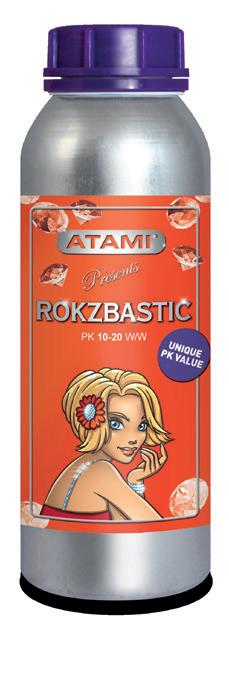
Suitable for growing on hydro, coco and soil

It’s time to meet Catherine Sherriffs! Catherine is not only a regular contributor; she’s also responsible for editing the pages of Garden Culture. Catherine started her career in journalism as a news anchor in Montreal’s radio and TV scene. But after starting a family, she traded it for the quiet life in the beautiful Laurentian mountains. Surrounded by lakes, crosscountry ski trails, and her backyard gardens, she loves spending time in the great outdoors with her hubby and three kids. She could go on and on but had to edit her own answers for space on this page.
What is your favourite plant to grow?
I love growing high-reward food crops that my family loves to eat, so green beans, tomatoes, eggplant, peppers, and sugar snap peas. I also love growing potatoes; there’s nothing better than a homegrown potato.
Do you prefer to grow indoors or outdoors?

My yard is overrun with deer and groundhogs, but I love growing my gardens outdoors, where plants can thrive thanks to the good old-fashioned sun, wind, and pollinator helpers. It’s also an excuse to get out of the house! But Canadian winters are long and cold, so I’m working on setting up a small indoor grow room right now, which I also expect to love.
What is your favourite food?
Where do I begin? I’m a foodie and generally get super excited about my meals. We have an outdoor wood-fired pizza oven, and I don’t think you’ve lived until you’ve tried the pizza. But I also love Mexican food, which is always fresh and flavourful.
What is your favourite animal or insect?
Dogs. I’ve got a full household with three kids and two dogs, and I wouldn’t have it any other way. I honestly think dogs can read your soul; they bring so much happiness to our lives. I love walking them every day. Plus, they help with keeping critters out of my gardens!
Where in the world would you like to travel to next?
I’d love to make it to Greece and Italy soon. But Canada is such a beautiful country, and I’m lucky to live here, so I’d also like to revisit the western and eastern coasts and some parts of Quebec that I haven’t been to yet, like the Gaspesie. Quebec is crazy beautiful! 3
Are you interested in writing for Garden Culture Magazine? We’d love to hear from you! Send us an email introducing yourself with a sample of your work. editor@gardenculturemagazine.com
I love growing my gardens outdoors, where plants can thrive thanks to the good old-fashioned sun, wind, and pollinator helpers

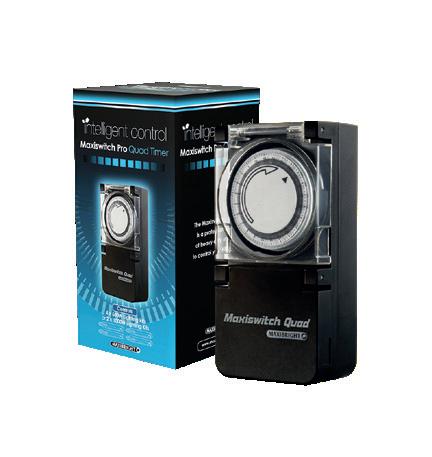
The phrase “Good things come in small packages” couldn’t be more appropriately used than for the Maxiswitch Pro Quad timer from Maxigrow. It may look small and unassuming, but it is mighty in its performance. The 13 Amp unit can easily control up to 4 x 660W or 2 x 1030W LED fixtures and, if using HID, 4 x 600W or 2 x 1000W from a single wall socket, freeing up precious socket space for other important grow-room equipment.
Whether you are after a timer for one light or considering expanding your small hobby room, the Maxiswitch Pro Quad Timer has you covered.
Head down to your local store or contact Maxigrow today.
Made in France by Terra Aquatica, DryPart Grow and DryPart Bloom are single-component powdered fertilisers. DryPart is the most concentrated in the TA range of fertilisers, pro viding all the nutrients plants need at all stages of growth. DryPart has two mineral formulas (one for growth and the other for flowering) that can be used for all plants. The formulas suit all substrates and hydroponics and perform well with hard or soft water types.
DryPart Grow and DryPart Bloom are highly water-soluble and designed to use separately depending on the stage of growth. Composed of the highest quality primary, secondary, and micronutrients in the proper con centrations to give maximum aroma and production. Both formulas contain regulators that stabilise the pH of the nutrient solution at the previously adjusted level.
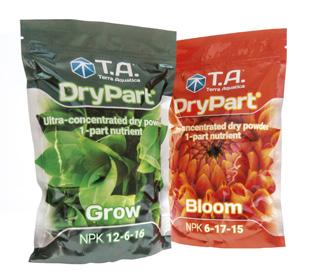
The dry powder format makes DryPart highly portable and easily stored, making it a popular choice for outdoor gardeners. Available in 1 kg bags.
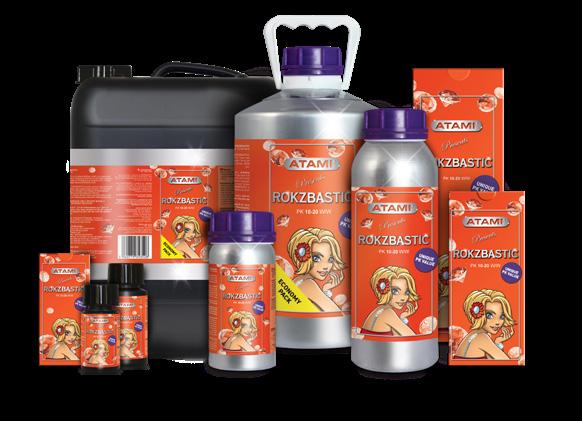
Check out TerraAquatica.com for the full range.

Rokzbastic is a flowering product designed for use during the weeks of flowering, throughout the fruiting and ripening phase.
Its unique PK 10-20 ratio ensures that your plants receive every thing they need to produce firm, full flowers and fruits. Potassium and phosphorus are essential at this stage of the plant’s life. Phos phorus ensures the plant stays energised during the flower ing, fruiting and ripening phases. Potassium helps strengthen the plant’s ability to resist disease and plays a vital role in increasing crop yields and overall quality.
Check out ATAMI.com for the complete line of Bastics.
Say hello to the newest member of the Bastics…
The DAYLIGHT 480W LED PRO has been upgraded and now has a total output (PPF) of 1334 μmol/s, offering growers even more high-end quality, full-spectrum light at the same affordable price.
The 480W PRO fits perfectly into a 1.2 x 1.2m grow tent (or growing area), allowing you to achieve ideal light coverage even in ‘smaller’ locations. Featuring five LED clip-on bars and packed with all the features of the PRO range of LEDs, including a lightweight, slimline design and a remote dimmer, all wrapped up with a price point that makes them highly appealing.The switch to LEDs couldn’t be any more tempting!
Contact Maxigrow for more details or visit
From the creators of Hygrozyme comes HYCLEAN - a powerful che lating agent for cleaning and preventing salt, mineral, and fertilizer build up in driplines, irrigation equipment, and grow media.This concentrated formula is made with non-toxic and environmentally friendly ingredients. Recommended to be used while growing to prevent salt and mineral buildup, in-between cycles for maintenance, and as a soak for tools and equipment. Hydroponic systems regularly maintained with HYCLEAN will last longer and run more optimally throughout.

Check out Hygrozyme.com for more information.
All-Mix is a premium types of peat, combining white and black to create the perfect blend for growing organically. Prefertilised and activated using organic materials, British Organic Bio’s All-Mix is ready to take your grow to the next level.

British Organic Bio also contains Trichoderma, a genus of fungi that aids the plant as a bio fertiliser and works as effective biocontrol against various pathogens.
Visit TNDdistribution.co.uk for all trade inquiries or to find a store near you.

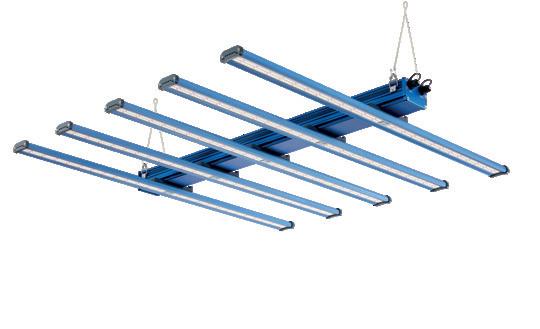

Dutchie Grow Tents are designed to make life as easy as possible for the grower. Every Dutchie Grow Tent comes with: • Steel joints
• Highly reflective Mylar internal lining • large D-type doors
Available in many shapes and sizes to suit your growing needs. Give @one.love.inc a follow for more great products.














The DAYLIGHT 1030W LED PRO has been upgraded and now comes with a full-spectrum total output (PPF) of 2884 μmol/s. This unit continues to push LED lighting to the next level. Its high-quality Osram and LUMLED LED chips cover an area of 1.5 x 1.5m up to 1.8 x 1.8m, with outstandingly uniform light coverage. With ten LED clip-on bars packed and all the features of the PRO range of LEDs, the 1030W 2nd gen includes remote dimming, iLink
If you’re looking for the ultimate in LED technology, and want to add even more power to your grow room, look no further than the newly upgraded DAYLIGHT
Contact Maxigrow for more details or visit GrowWithDaylight.co.uk




The largest grow tent that BudBox has to offer comes fully accessible: two main front doors, one front access door, four side access doors, one rear access door, and 33 port options in 4 sizes; the BudBox PRO Titan 9 also provides 12 micro-mesh passive filters and 5 night vision windows. The 25mm powder coated, tempered steel poles, 1mm thick walls, metal push/click connectors, roof hanging bars with silicone pads, main door clips, and the clear floor area are practical and durable features. The double cuff vents, 20% oversized vents for acoustic ducting, and double-stitched seams ensure that you have control
An all-natural, 100% organic rooting gel, Rapid Roots helps to get cuttings and seedlings on the direct route to healthy, structured, swift development. Completely free from potentially harmful synthetics, Rapid Roots draws instead upon extracts of Bladderwrack seaweed, carefully prepared to preserve its rich stock of natural plant hormones, vitamins, trace elements, and other nutrients. Originating in the inhospitable, intertidal zones of the sea, Bladderwrack naturally possesses anti-stress properties that are ideal for cuttings and young plants.
Rapid Roots accelerate the uptake and transportation of nutrients with the added extract of humic-rich Leonardite. By helping your plants feed more quickly and efficiently, this mineraloid substance helps boost cell division and stimulates prolific growth.
Available now in 50ml and 200ml dispensers, Rapid Roots is distributed worldwide by AutoPot Global Ltd. Visit AutoPot.co.uk to learn more.

A highly concentrated, two-component nutrients balanced for the growth and flowering phase, Cocos A & B are easily absorbed over a wide pH range, creating a buffer for when the pH is not optimal. Phosphorous and calcium are known to bind to each other and precipitate. As a result, they are no longer absorbable by your plant. Cocos A & B prevents this process. Cocos A contains calcium, and Cocos B contains phosphorus. When both nutrients are added to water separately, the solution is diluted so that calcium and phos phorous are no longer precipitated.

For more information, visit Plagron.com

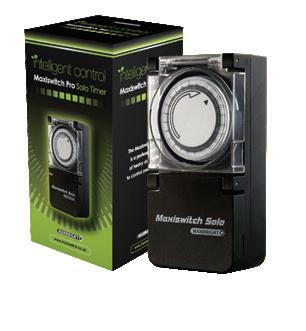

Do you ever worry about unreliable timers wreaking havoc with your light cycles? Ever had problems with lights not turning off when they should or turning back on at random times in the middle of the dark cycle? These issues can set you back weeks, but with the Maxiswitch Solo Timer, Maxibright covers all your light-cycle worries. If you only have a modest grow room and don’t require the usu al bulkier contact relays, this unit is ideal for operating one HID or LED grow light up to 660W. The perfect solution for hobby growers con cerned with getting high-quality per formance out of a small area.
Head down to your local store or contact Maxigrow today.
Many of us have closed our garden beds for the winter, but if you can’t wait to get growing again, consider winter seed sowing!
This technique involves starting seeds in repurposed milk jugs and other plastic containers so you can get a head start when the temperatures begin to warm. Cool-season crops such as kale, cabbage, spinach, lettuce, and chard will all do well with winter sowing. Prepare your container of choice by cutting two-thirds of the way up and leaving one side intact, so you have a flip-top. Fill the ‘pot’ halfway with moistened potting soil and sow a few seeds inside. Flip the top closed, secure it with duct tape, and place it in a sunny location outside. Transplant your seedlings into a container or the garden when they have two to three sets of true leaves and are about 4-6 inches (10-15cm) tall. You’ll be well on your way to a productive spring garden and don’t have to worry about hardening off. Bonus!


For more awesome garden tips for growing no matter the temperature, check out Four-Season Food Gardening: How To Grow Vegetables, Fruits, And Herbs Year-Round by Misilla Dela Llana from Learn To Grow. 3

You’ll be well on your way to a productive spring garden and don’t have to worry about hardening off

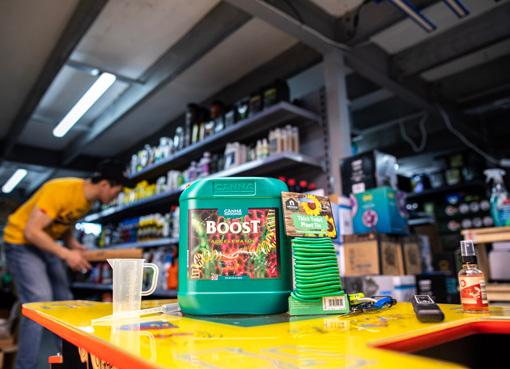



Brand new to the pages of Garden Culture Magazine, Confessions of a Hydro Store strives to connect you with the grow shops selling your favourite products (and offering your favourite magazine!). In today’s world, the sense of community
amongst growers is more important than ever. In our first edition of this segment, we’d like you to get to know The Hydro Bros. Based in Croyden, South London, The Hydro Bros offer growers incredible products and even better service.
Helping their customers achieve the best yields possible. Open and serving customers for four years, The Hydro Bros tell us like it is; it ain’t easy running an international shop with only five employees, but they wouldn’t have it any other way.
What has been your most embarrassing moment at the store?
We’d just opened and thought we were well stocked; we had no idea. It’s the worst feeling when customers come in asking for a common product we don’t have.
Is there one moment or memory at the shop that stands out for you?
The moment at the very beginning when many wholesalers wouldn’t or couldn’t open an account with us. That was a hor rible feeling, as we’d just sunk a fat deposit on the premises! That, and budget, were a couple of reasons our shop was empty when we first opened.
What achievement are you most proud of?
There isn’t a specific achievement that stands out over others, but we’ve loved getting exclusive hydro shop merchandise from suppli ers and securing access to in-demand product lines. We have used these to guide us on the right path!
What is the worst question you have been asked by any of your customers?
It’s a challenge to keep on top of all social media from all time zones while also keeping an eye on the 5000+ product prices, play ing a daily game of stock Tetris, running the store, and keeping up with online orders in the UK and abroad. Doing all of that while trying to continually improve certainly keeps us busy.
How much time and effort do you spend on your social media?
One of the straplines we use is #WeDont Stop, and we don’t. Anyone using IG for business will appreciate that it takes work. However, doing things you enjoy makes it a lot easier. IG can be a fun way to share information with many people quickly.
How do you create customer loyalty?
We have a loyalty scheme online; you earn Hydro Bros Credits each time you spend, which you can redeem. We’re working on getting this active in-store as well. Other than that, we keep doing what we are doing: providing good customer service. When we don’t have an answer to a question, we will find out and get back to you.
Figure 1
Can we set up their grow room for them? We can’t.
And the most asked question?
At 5:55 pm, “I really need X. Can you wait 10 minutes for me before you close?” Jay, our store manager, absolutely loves it.
What are some of your favourite products? Why?
Floraflex micro dripper setup because it’s easy to set up, and I’m a sucker for that white and green branding! If it does what it’s designed to do and looks fresh and clean, I’m sold!
I also love any Mycorrhizae because they’re just so damn easy to add to any schedule.
And finally, Trolmaster allows you to remotely monitor, manage and control your grow room from A to Z. I’m a data junky, so seeing historical graphing lets me know everything is on point all the time.
What is the biggest challenge of running the shop?


Everything! It’s not easy. We like to keep in touch with what’s hap pening in the UK grow scene and know what problems people are facing and what products are or aren’t working.
One of the biggest ways we improve is through feedback; it’s an invaluable source of information. You can’t fix what you don’t know!
Looking back, what would you have done differently? Negotiated a better deal before we moved into the premises! 3
Store to confess?
We like to keep in touch with what’s happening in the UK grow scene and know what problems people are facing and what products are or aren’t working.
Foliar feeding is an easy, low-cost way to boost yields and achieve better quality harvests. This technique works by spraying a growth-enhancing nutrient mist on plant leaves.
Leaves have a unique epidermal structure that absorbs super charged plant nutrients and additives, inducing maximised hydro ponic crop yields (improved by up to 50%). A high-quality fulvic acid should be used as part of your foliar feeding regime for opti mised plant growth and health.
Fulvic acid is created by microbes working on decaying organic matter in the soil. It is a fundamental part of the structure of rich, composting soil and originates from humic acids.
Humic acids are chemicals produced by decaying plants. They are complex molecules in soils, peat, oceans, and freshwater. Humic acids come from sedimentation layers known as “leonardite”. These layers were originally deep in the earth’s crust but have been exhumed closer to the surface over many years.
As a humic acid product, it’s no surprise to discover that fulvic acid molecules carry 60 or more trace elements and minerals nec essary for life. Fulvic acid can be found in rich soils that have not been depleted by over-farming and chemical-based fertilisers and pesticides.
Fulvic acids are more plant soluble than humic acids. This is be cause the oxygen content of fulvic acid is almost double that of humic acid. Fulvic acid is a natural complex organic molecule (electrolyte) that should not be soluble in water. However, it is covered in negative ions, which increases its water solubility.
Because of the small molecular size and electronegative status of fulvic acid, it can easily mix with minerals and metals, making them readily available for uptake.


Stomata are cell structures, or pores dotted all over the epi dermis of leaves. The primary function of stomata is to enable the exchange of carbon dioxide and water between plants and the atmosphere. Fulvic acid can easily be absorbed through the stomata when applied to the leaves in a foliar form.
If your plant suffers from a nutrient deficiency, applying the re quired nutrient with fulvic acid via foliar spray will ensure that the most necessary nutrient is absorbed as fast as possible. Fo liar feeding with fulvic acid and a tailored mineral supplement is often the fastest, most effective way to launch a counterattack against any threat to your plant’s health.
All vegetables with leaves will benefit from foliar feeding






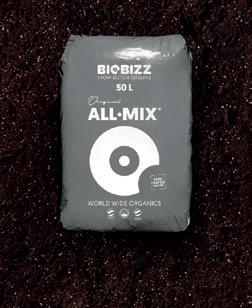












Fulvic acid takes all the elements your plant may struggle to take up by itself and assists the roots in utilising and processing these es sential molecules. For example, it aids in ab sorbing nitrogen, potassium, and phosphorus (NPK), the three primary nutrients. Ful vic acid helps transport nutrients to plant tissue faster and more efficiently; plants can achieve more rapid growth and pro duce larger yields.
In the scientific study (1) “the effect of foliar application of fulvic acid on water use, nutrient uptake and yield in wheat”, researchers found that spraying plants with fulvic acid resulted in higher levels of chlorophyll in the leaves as well as an increase in phosphorus uptake by the roots.
Field trials demonstrated that when fulvic acid was applied to re duce stress caused by extreme weather like drought or hot and dry winds, grain yield increased by 7.3 – 18.0%. Spraying leaves with fulvic acid helped to improve the output of stressed plants to 97% of the irrigated controls.
Begin foliar feeding with fulvic acid during the clone phase, through veg and up to weeks two or three of flowering. Fulvic acid has aux in-like abilities, so it’s a great organic way to nurture those clones.
Using foliar spray after week three of flower may encourage the formation of botrytis amongst denser areas of your grow room that may receive inadequate air circulation.
• Always follow the guidelines on dosages for store-bought feeds. Are you making your own foliar feed? Be careful not to make it too strong, as you could scorch the leaves if salts in the solution remain on the leaf surface. Try spraying a few test leaves and check a few days later for any sign of scorching. If there is, dilute the solution and try again.
• Research indicates that water droplet size is not overly crucial regarding nutrient absorption. However, heavier drops tend to slide off leaves easier. Therefore, a disperser with a deli cate, misty spray is always preferable.
• All vegetables with leaves will benefit from foliar feeding. Veg etables with significantly robust leaves with waxy cuticles are unlikely to absorb as much feed, but there will still be some benefit. The leaves of greenhouse-based vegetables are soft er, drink more feed, and enjoy more benefits.
• Spray the whole plant, and ensure you cover both the upper and lower surface of the leaves. Don’t spray in direct sunshine or during “lights on” in the grow room. The drying of the salts in the foliar feed solution may result in leaf scorching.
• Avoid watering conventionally until the spray has dried. As far as possible, try to avoid spraying before rain is forecast, as any extra water will dilute and wash away the solution.

• Always wash your produce well before using it. It’s good practice to stop spraying around a month before harvest. If you’re using a store-bought product, follow the label’s guid ance.
Your plants get most of their nutrients via their roots and the rich, healthy environment you create for them, courtesy of various fertilisers, additives, and microbial life. However, foliar feeding is an excellent supplementary addition to any feeding schedule. Giv ing your plants a regular spritz of concentrated encouragement is more than worth it. Combined with the benefits of fulvic acid, foliar feeding is a quick and efficient way to get nutrition into your plant when it needs it most. 3
References:
• publish.csiro.au/cp/AR9860343
Bio An industry veteran with over 20 years of experience in a variety of roles, Rich is currently a business development manager for a large UK hy droponics distributor.The author of the Growers Guide book series, Rich also writes on all aspects of indoor gardening. He is also an independent industry consultant, working closely with hydroponic businesses worldwide.
Fulvic acid helps transport nutrients to plant tissue faster and more efficiently; plants will grow faster and produce larger yields
Fulvic acid can be found in rich soils that have not been depleted by over-farming and chemical-based fertilisers and pesticides


Ensuring plants have the right amount of N at the right time and in the correct form is the foundation for a grower’s success
created equal?
Plants discriminate. Like us, plants have preferences on what they like to eat and more importantly, just like us, they can make bad choices. Our understanding of how plants take up nutrients and select and avoid available nutrients has evolved dramatically in the past decade. From being seen as passive recipients of what is provided to them to witnessing an active selection and, to some extent, an active “farming” of nutrients, the humble plant, or more specifically, the phytomicrobiome, is a complex world of signals and messages that rival our brain and our gastrointestinal microbiome. As we learn more about what a plant consumes, we recognise our old notion that “a plant can’t tell the difference between nitrogen that comes from a synthetic fertiliser or that comes from hen manure” isn’t true.

Nitrogen (N) is by far the most important of all the essential nutrients, but as the adjective describes, all essential nutrients are integral in the health and vigour of plants. Nitrogen has critical roles in both primary (e.g., biosynthesis of nucleic acids, amino acids, chlorophyll, photosynthesis, etc.) and secondary metabolism (e.g., biosynthesis of flavonoids, cannabinoids, alkaloids, terpenes, etc.). Ensuring plants have the right amount of N at the right time and in the correct form is the foundation for a grower’s success. It is essential to remind ourselves that the primary responsibility of the grower is to optimise photosynthesis. Optimal photosynthesis in the vegetative stage directs plants toward a hardy flowering or fruiting future. It also provides necessary resources to address issues like pests or pathogens via the production of secondary metabolites. This sounds far too easy. That’s the beauty of reductionist science, in which we better learn how things may work if they were in a “bubble” (in isolation without any confounding variables). However, Nature is far too complex to be simple. Nitrogen uptake by plants, regardless of N source, varies incredibly by the media in which the plants are being grown.
Our understanding of how plants take up nutrients

select and avoid available nutrients has evolved dramatically in the past decade
convert organic and inorganic N into forms that plants can readily take up and manufacture amino acids, the building blocks of proteins.
Plants can take up various forms of N, namely, urea (which will be converted to ammonium by the plant enzyme urease), ammonium (NH4), nitrate (NO3), and even amino acids. Ideally, nitrogen taken up in the roots is converted to amino acids before entering plant sap. Excessive amounts of nitrate and ammonium can alter root morphology (e.g., reducing lateral root branching), plant structure (e.g., shorter plant structure) and development (e.g., prolonged vegetative phase). In extreme cases, it will increase disease (e.g., more powdery mildew with nitrate nitrogen) and insect susceptibility (e.g., increased whiteflies and aphids with free nitrate nitrogen and increased spider mites with high levels of ammonium in plant sap).
Often, broad statements are made about the form of N having better plant utilisation than another. However, the context of which growing media is not reported. The form of N should differ when growing in stone wool versus a soilless mix versus a living soil (indoor or field-grown), largely based on plant:microbe interactions. Critical to our understanding of N-use by plants is to acknowledge that plants and nitrogen, along with microbes (both in soil and water), have been working things out for millions of years before humans existed. Also, remember that the air we breathe comprises nearly 79% N. Various soil microbes can

and

Grab any bottled liquid nutrient or soluble salt fertiliser for vegetative growth. It will most likely contain a form of nitrate nitrogen, commonly calcium nitrate. But it could also be ammonium nitrate or potassium, sodium nitrate (Chilean nitrate), or magnesium nitrate. Most hydroponic growers prefer nitrate nitrogen because plants can uptake nitrates readily and store excess in plant tissue, unlike ammonium, which will show toxicity. Ammonium (e.g., ammonium nitrate, ammonium sulphate, or ammonium phosphate) can decrease pH in hydroponic systems and often compete with other cations for plant uptake.
In contrast, nitrates will increase pH and must be monitored to ensure that the higher pH does not impede the uptake of certain nutrients like phosphorus, zinc, and iron. Many nutrient companies will only use NO3 as their only form of N, which is fine if it is not added in excess. However, overfeeding plants with nitrates can allow for reserves in plant tissues, altering the N:K (potassium) ratio in tissues and sap. This imbalance disrupts the plant’s ability to maintain high sugar levels (i.e., Brix) and, as a result, may be more susceptible to pests and pathogens.

Nitrates are like candy for plants; they love it and will consume more than they need. But they pay for it. It takes a fair amount of energy to remove the oxygen from NO3 to provide the N required for amino acid synthesis. In natural soils or soilless mixes, the excess oxygen can lead to oxidised soils that can impact the uptake of other essential nutrients like manganese, zinc, and iron, making a more disease-susceptible soil for pathogens like Fusarium and Pythium. Using nitrate nitrogen sources is not the best option in natural soils, soilless potting mixes, and even living soils (i.e., peat/coco mixes with worm castings/compost).
Despite being an excellent molecule for vegetative growth, only provide nitrates in combination with other forms of N, including ammonium, urea, amino acids, and organic N (i.e., compost, green and animal manures, etc.). This combination is where the “other half” of plants fit in the soil microbes. The phytomicrobiome, in all its complexity, can facilitate the uptake of many forms of N. Ammonium and amino acids can more readily be transformed into peptides and proteins, limiting the excess of N in tissues and sap that can be attractants for pests and diseases. When it comes to amino acids (e.g., soybean meal, canola meal, fish hydrolysate, kelp extract, etc.), it is essential to note that plants (as well as humans) primarily used L-amino acids (and not D-amino acids). L-amino acids are a biologically active form that can readily be used for biological synthesis and are created by enzymatic degradation while maintaining low temperatures. Often, amino acids are considered biostimulants rather than fertilisers because they can indirectly increase the uptake of other minerals that contribute to the health and vigour of plants.

Understanding N dynamics in the plant:soil interface is indeed dynamic. It is everchanging and will continue to change as we learn more about how these complex systems operate in various environments. A few decades ago, the common thought was that all nutrients entered the root via diffusion or active transport. Now we have recognised that large molecules, including amino acids, proteins, and even microbes, can be ingested as nutrient uptake, subsequently reminding us that we still have a great deal to learn about the world of plants and soil. 3
Most hydroponic growers prefer nitrate nitrogen because plants can uptake nitrates readily and store excess in plant tissue, unlike ammonium, which will show toxicity
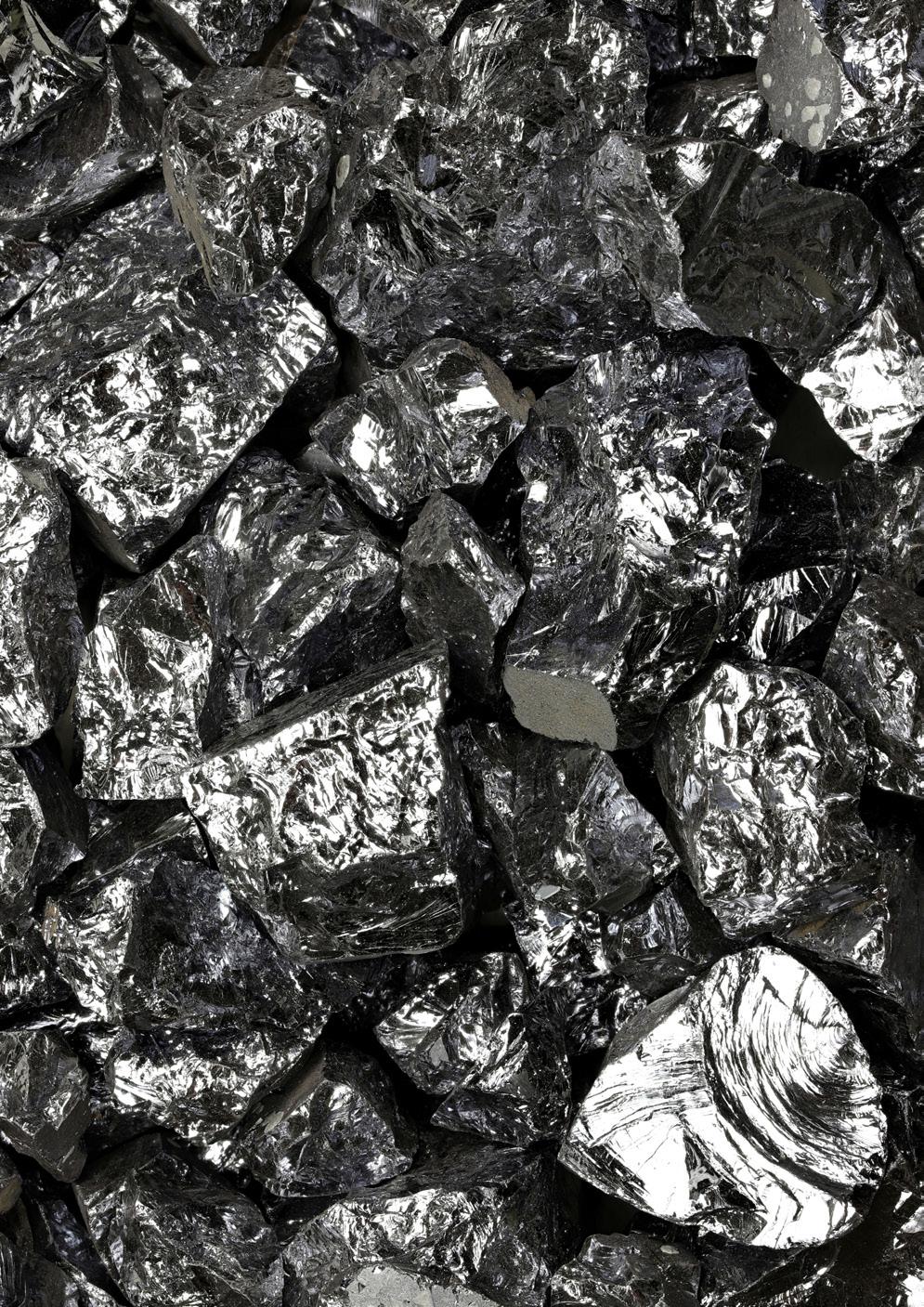
Having been in the HVAC side of farming for many years, I have always hesitated to look into the side of the plant below the soil and what it takes for it to behave properly above the soil. However, now that environmental control is getting easier for me, I think it’s time to explore other parts of growing, and it’s turning out to be even more exciting and fun than I expected! I hope my explanations below do science justice, as the real-world results speak for themselves.
Some of you may have read my first ar ticle with Garden Culture about Hypo chlorous Acid and how well it worked for me on Powdery Mildew (PM). In that ap plication, we were foliar spraying our out door hemp, and the Hypochlorous did a great job preventing the spread of the PM while helping with bug prevention. However, the one thing I couldn’t achieve was stopping the PM from starting in my plants. A friend convinced me to specifi cally look at introducing mono-silicic acid (MSA) to my fertiliser mix. I had no idea what I was getting into, but six months later, I am astonished at the results and how well the product worked. None of my indoor plants has PM anymore, and neither does any of their clones. We have done one full round of flower from those plants, and we haven’t had to re move a single leaf due to PM. The indoor PM problem in my grow wasn’t horrible, but any amount is bad. This “experiment” was a huge success, and I was compelled to write about it.
The only change I made was the introduction of silicon in the form of mono-silicic acid to my reservoir. It seemed too easy; could this simple addition have made such a huge difference? However, the more I dug, the more it appeared true.
After seeing such great results, I wanted to learn more about the product I was using and how it works. Silicon strengthens cell walls, allowing faster growth and better water loss control by sup porting stomata for more effective closure. It increases root mass and, so indirectly, increases nutrient uptake. [1] All these systemic benefits increase leaf size, growth rate, Brix content and yield. But silicon’s role doesn’t stop there. Silicon deposed in or between cell walls (phytoliths, or ‘plant opals’) doesn’t just work as scaffolding; it provides direct protection against predation and fungal attack by forming a gel-like structure that physically repels penetration by mould spores and wears out the mouthparts of insect predators.
All silicon products are not equal. Silicates include industrial com pounds like calcium, potassium silicate, and organic sources, such as rice hulls. The downsides with silicates include the time need ed for transformation by microorganisms into active mono-silicic. Think of silicates as a cow. We can not eat a cow, but we can eat a steak.
Then you have, Nano-silicates: As the name suggests, nano-sil icates start as common raw materials and undergo proprietary processes to create and sometimes encapsulate tiny particles that can pass through tissue.
And finally, we have stabilised mo no-silicic acid. Originally brought to the commercial agricultural market in the early 2000s, stabilised mono-silicic acid directly addresses the problem of the instability of naturally bioavailable silicon. The most straightforward explanation of how this process works is that specif ic amounts of Molybdenum and Boron are added to potassium silicate. Single atomic mono-silicic acids stick to the Molybdenum and Boron, making it avail able to plants. Manufacturers were able to provide immediately bioavailable sili con in the form that plants have evolved to use. The only downsides were high pricing, the inherent lack of an organic option, and the problem of breakdown above concentrations of around 4% mono-silicic acid. Still, given the tiny amounts required compared to tradi tional silicates and their increased effectiveness, they quickly took off in commercial agriculture. Since the mid-2000s, mono-silicic stabilisation technology has moved forward again. Second-gen eration MSA uses ethanols for stabilisation to achieve up to an incredible 40% mono-silicic acid concentration.
There is only one brand in the world using this new technology, Grow Genius. GG hasn’t publicly explained the magic to how they get to 40%, but I generally understand they use a different chemi cal process and ethanol to get a stable slow-release solution.
We used 0.3ml/L of water in the reservoir for a week or so for our indoor crop. Each time we fill the tank, we add more mo no-silicic acid at that ratio. We have never seen anything falling out, pH shifts in solution, or any mess from particulate residue. I’m excited to experiment with this product on our farm, Galiano Grow House Inc. We plan to use the product on all the outdoor and indoor vegetables/fruits; the next step will be to start using the product in foliar applications. So, don’t be surprised when you hear from me again about the crop results. 3
1) E. Epstein, “Silicon,” Annual Review of Plant Physiology and Plant Molecular Biology, vol. 50, pp. 641–664, 1999.
2) Liang Y.C., Sun W.C., Zhu Y.G., Christie P. Mechanisms of silicon-medi ated alleviation of abiotic stresses in higher plants: A review. Environ. Pollut. 2007;147:422–428. doi: 10.1016/j.envpol.2006.06.008. [PubMed] [CrossRef] [Google Scholar] / Deshmukh R.K., Ma J.F., Bélanger R.R. Editorial: Role of sili con in plants. Front. Plant Sci. 2017;8:1858. doi: 10.3389/fpls.2017.01858. [PMC free article] [PubMed] [CrossRef] [Google Scholar] / Fauteux F., RémusBorel W., Menzies J.G., Bélanger R.R. Silicon and plant disease resistance against pathogenic fungi. FEMS Microbiol. Lett. 2005;249:1–6. doi: 10.1016/j. femsle.2005.06.034. [PubMed] [CrossRef]
Silicon strengthens cell walls, allowing faster growth and better water loss control by supporting stomata for more effective closure
The planet is getting hotter with more and more gardeners having to learn how to cope with the challenges of growing in dry conditions. Anne Gibson offers some advice on helping plants making it through the many heat waves to come.
High temperature or heat stress is one of the abiotic stresses that many plants encounter during their growth and development. Heat stress (HS) can reduce or slow growth and plant functions and may even cause death. At higher temperatures, photosynthesis and respiration are also affected. Most gardeners have to mitigate the impacts of heat on their plants; it helps to have a toolkit of strategies you can dig into.

Some of the major impacts of HS include the ability of a plant to reproduce by seed and lower yields. The study Molecular mech anisms of the plant heat stress response (1) determined that seed germination and photosynthetic efficiency decline when the garden suffers from heat stress. In addition, high temperatures pre vent pollen grains and seeds from swelling and dispersing during flowering, reducing fertility. Other impacts that plants may experience include:
• Stunted growth.
• Wilted or curled leaves on a hot day.
• Sunburn or leaf scald (usually tan or white foliage), damaged skin on fruits and bark.
• Excessive exposure to solar radiation may increase susceptibil ity to pests and diseases.
• Leaves dying back and dropping.
• Dehydration, especially if exposed to extreme temperatures and wind without sufficient soil moisture or protection.
• Bolting to seed. Leafy greens like lettuce, Asian greens and broccoli go to flower in intense heat or sunlight without pro tection and sufficient moisture.
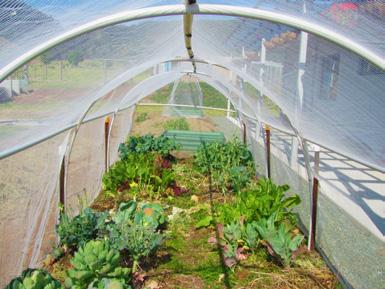
• Inability to produce flowers or seeds.
The research study Complexity of the Heat Stress Response in Plants (2) explains that all living organisms experience above-average tem peratures as heat stress. Plants, in particular, have developed several responses to high heat to minimise damage.
According to the Handbook of Plant and Crop Stress, “plants respond to heat stress by inducing heat shock proteins (HSPs) for self-de fence. Plant heat tolerance is associated with the synthesis of HSPs, which protect plants from otherwise nonpermissive temperatures and provide them with an endogenous protection system for ther motolerance. The synthesis of HSPs occurs in diverse plant species when exposed to temperatures 10°C–15°C above ambient tem peratures.”
Many studies (3) show heat and UV-radia tion cause plants to alter the production of stress-specific proteins and help stabilise the plant’s functions. These are thought to pro vide a protective role to the tissues against the damaging effects of heat stress.
What factors affect heat stress conditions?
Many factors affect whether plants are impacted by heat stress or not.
Firstly, inadequate or inconsistent soil moisture prevents plants from accessing the nutrients they need to survive and imple ment protective strategies. Insufficient soil depth may be a contrib uting factor.
Secondly, the cell membrane in plants controls how tolerant they are to temperature. Plants that originate from warm or hot cli mates and have a lot of saturated fats in their membranes have good heat tolerance. e.g. Agave, cacti, aloe vera and pigface. They are well adapted to heat stress.
Thirdly, leaf size and the sun angle play a role. The more leaf surface in the sun, the larger the area of the plant that will heat up. For example, a large pumpkin leaf exposed to the sun will heat faster than a thin small thyme leaf that may be partially angled away from sunlight.
Finally, plant age and growing environment can also impact vulnerability to heat stress. Young seedlings without a well-devel oped root system are particularly susceptible to sunburn. Likewise, young woody plants with thin bark grown closely in a shaded nursery environment may not tolerate strong direct sun. Reflected heat from pavement or glass and materials that reflect light may exacerbate damage from heat stress to nearby plants.
Most plants can tolerate some heat above what they are comfortable with. However, extreme heat for long periods, especially without adequate moisture, can damage them permanently or even kill vul nerable species.
Heat stress (HS) can reduce or slow growth and plant functions and may even cause death
Inadequate or inconsistent soil moisture prevents plants from accessing the nutrients they need to survive and implement protective strategies

Sunlight is most intense in the middle of the day and late afternoon in summer, particularly from the west. So it makes sense to be familiar with the various microclimates in your garden and where vulnerable plants are most exposed. Choose plants that suit your climate and are heat tolerant where possible.

• Use shade structures such as a sail, shade cloth, awning, pergola, or netting. There are many DIY portable or temporary shade solutions you can make. Palm fronds are just one example of garden ‘green waste’ you can reuse in a practical way to save money and food crops. An old sheer curtain or tablecloth work well when attached to posts or bamboo. Filter the light and heat to reduce transpiration.
• White shade cloth (50% or 30% UV) helps reflect heat to keep your crops cool. It is also more visible to bats and other night creatures, reducing the risk of injury.
• Use living plant canopies and vertical climbing species as shade to protect shorter plants. Grow heat-sensitive plants under trees or in the shadow of taller sun-loving species. Vertical structures like trellises with beans or passionfruit allow plants to grow as a living wall to take advantage of sunlight while creating a partially shaded microclimate for vulnerable leafy greens. Tall corn or arrowroot have leafy canopies that can also be used to underplant in a shadier protected zone.
• Grow food in portable pots. I move my ‘Meals on Wheels’ on castors out of the direct sunlight into more shady locations in the heat of the day. Portable containers provide flexibility to control growing conditions.
• Utilise existing shade. Buildings, pergolas, fences and sheds may cast shadows that are ideal for locating sun-sensitive plants. Match zones with dappled light, filtered sun and shade to plants that suit the conditions.
• Group pot plants together to increase humidity, create shade and reduce moisture loss.
• A layer of mulch on all gardens and pots minimises moisture loss and keeps soil temperatures more consistent and cooler during summer. Always apply after watering. An alternative is to grow living mulches or ground covers like sweet potato, na tive violets or nasturtiums to shade the soil and hold moisture.
• Water soil early morning when there is less evaporation. Plants have access to a water reservoir to counter the heat during the day.

• Liquid seaweed helps minimise heat stress and can be used as a tonic for affected plants.
• Use a soaker hose, self-watering pots or drip irrigation on a timer to keep moisture at soil level rather than sprayed onto foliage.
• Check soil moisture levels and water deeply as needed. A good soak is more effective than a daily surface sprinkle! Ensure good drainage to maintain oxygen levels and avoid root rot.
• Mound around fruit trees to create a ‘bowl’ where water can filter down to the centre rather than run off the surface. Ollas or DIY alternatives like bottles with water spikes also ensure moisture gets to the root zone.
• Use self-watering containers or pot saucers that wick water upwards.
• Check the potting mix in container-grown plants regularly to ensure it has not become hydrophobic. Replace as needed to avoid watering more frequently in hot weather.

grow living mulches or ground covers like sweet potato, native violets or nasturtiums to shade the soil and hold moisture














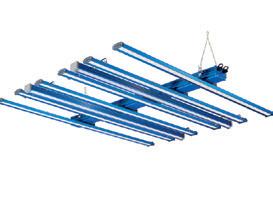



• Delay transplanting young seedlings on a day when high heat is forecast. Acclimatise them gradually to sunlight and plant late in the day so they can settle in overnight when temperatures are cooler. New plants need more water to support root growth.
• Hold off fertilising in the heat, unless you can water your garden well. In dry conditions, plants photosynthesise less to survive. More nutrients and resulting growth will only further stress plants if moisture is lacking.
• Deadhead flowers, but avoid removing partially dead foliage. Leaves will help shade and protect the plant, even if they’re dead!
• Pruning is best avoided during the heat as it promotes new young, unprotected tip growth.
• Harvest daily and pick produce a little unripe if necessary to rip en indoors. This minimises the need for the plant to put energy into fruit, pods or seeds. Instead, it can focus on survival.
• Pay attention to crops like tomatoes, cucumbers, melons, cap sicum, squash, zucchini and pumpkins that tend to drop flowers in high temperatures. Provide proper support to help them set fruit.
• Sow seasonal crops, so you don’t set yourself up for failure. When higher temperatures are forecast, plant vegetables that will tolerate the conditions and save seeds from cool-season annuals.
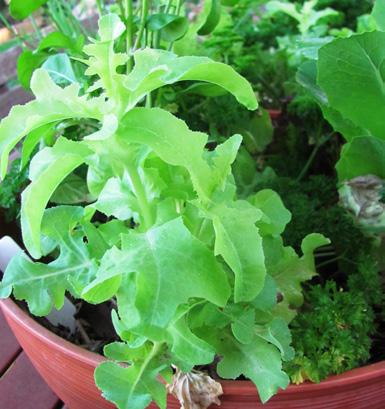

By observing and managing our seasonal climate conditions and cre ating favourable growing environments for heat-sensitive plants, using suitable cultural practices and choosing our plants wisely, we can con fidently manage heat stress in our gardens. 3
1. “Molecular mechanisms of the plant heat stress response.” Ai-Li Qu et al. Biochemical and Biophysical Research Communications, Volume 432, Issue 2, 2013. doi.org/10.1016/j.bbrc.2013.01.104.
2. “Complexity of the Heat Stress Response in Plants.” Kotak, Sachin et al. Current Opinion in Plant Biology 10.3 (2007): 310–316. Web.
3. Handbook of Plant and Crop Stress by Mohammad Pessarakli. p488-491.
Anne Gibson, The Micro Gardener, is an author, speaker and urban garden community educator on the Sunshine Coast, in Queensland, Australia. Anne is passionate about inspiring people to improve health and wellbeing, by growing nutrient-dense food gardens in creative containers and small spaces. Anne regularly presents workshops, speaks at sustainable living events, coaches private clients and teaches community education classes about organic gardening and ways to live sustainably. She has authored several eBooks and gardening guides. Anne shares organic gardening tips and tutorials to save time, money and energy on her popular website - TheMicroGardener.com
Young seedlings without a well-developed root system are particularly susceptible to sunburnLettuces bolting in heat


What would be at the top of your priority list if you were searching for employment? Of course, a good salary, fair working hours, and benefits are all likely vital factors. But how about the opportunity to feed yourself and your family with nutritious fruits and vegetables every week at no cost? This unique and fantastic perk is offered to Tito’s Handmade Vodka employees with the debut of Fourteen Acres Farm.
In Austin, TX, Tito’s Handmade Vodka specialises in making corn-based, certified gluten-free vodka. But the distillery sits in a food desert, meaning the surrounding communi ties lack access to fresh and nutritious produce. With so many of its employees living in those areas, Tito’s decided to be a part of the solution and, last August, launched Fourteen Acres Farm right next door to the distillery.
A team of seven farmers tends to the land, growing more than 25 types of fruits and vegetables, including mixed greens, a variety of lettuce, peppers, cabbage, broccoli, beans, tomatoes, eggplant, squash, and potatoes. Initially, employees were offered pre-packed bags of produce. But to cut down on food waste, a farm-to-market distribution has been introduced so workers can select what they’d like to eat each week and connect and interact with their farmers. They also receive meal ideas and recipe cards to inspire delicious culinary creations.
“Education is so important, and we may be growing pro duce that some of our employees have never tried be fore,” explains Kathleen Kuper, Farm Director of Four teen Acres Farm. “We also feel it’s important to provide educational opportunities to support our employees who want to start home gardens and share more with their families!”

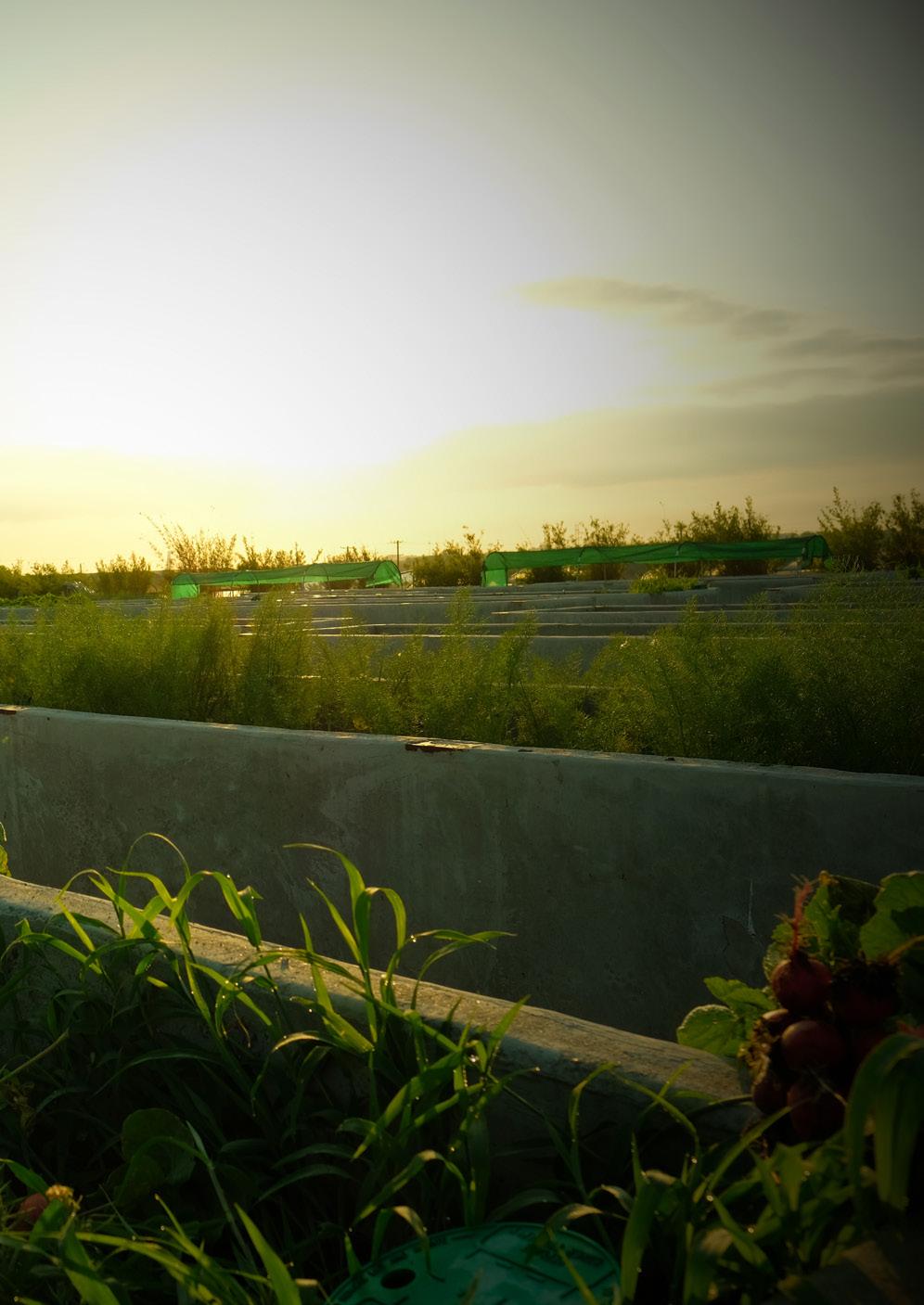

Employees like Javier Sosa, who has been Head of Quality at Tito’s Handmade Vodka for six years. He says his family looks forward to sharing meals made with the farm-fresh produce he brings home weekly.

“I really enjoy the kale and potatoes,” he says. “One of my favourite dishes to make is Zuppa Toscana soup. It’s warm, hearty, and so easy to make!”
A Bright Light Sosa is not alone in his appreciation for the farm. Amy Lukken is the Joyologist at Tito’s Handmade Vodka; her role is to spread love and happiness and bring out what’s right and good with people (I don’t know what I like better, her job description or the free groceries!). She says Fourteen Acres Farm has been a bright light for many in the Tito’s family.
“The reaction to the farm has been positive and beyond what we imagined it to be,” she says. “We had more than twice the amount of people sign up for the first week than we expected. Because of this excitement, the farm con tinues to grow to keep up with the demand!”
With 14 acres of land, the farm grows its food crops in 74 raised beds and 16 high tunnels





With 14 acres of land, the farm grows its food crops in 74 raised beds and 16 high tunnels. The farm staff starts the seeds in the greenhouse; once they sprout, the seedlings are moved out into the hoop houses, which have sides that can be raised or lowered depending on the wind condi tions. The current barn was the original greenhouse, made of old sea containers that the staff diligently cleaned and put together. The farm has also repurposed and recycled many excess materials from the distillery to make the raised beds, support walkways, and help prevent erosion in the gardens. It’s one of the many ways Fourteen Acres Farm strives for sustainability. However, Kuper says the most crucial aspect of all is building soil.

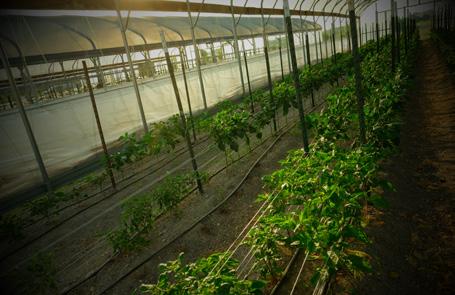
“We utilise vermiculture and compost at Fourteen Acres Farm,” says Kuper. “We keep our farm clean and our soil healthy, as healthy soil helps to manage pests and diseas es.”
Farm waste is composted and returned to the soil as nu trients for the next crop, and compost teas are offered to the plants regularly. Several farm dogs (affectionately called “co-woofers”) help with critter control, keeping rabbits and rodents away from the produce in the fields. But most of all, the co-woofers make excellent company for the farmers.

Of course, no growing venture is without problems, and Fourteen Acres Farm has faced its fair share of challenges in the fields, such as hurricane-force winds last spring.
“Three of the biggest challenges we’ve had growing so far are wind, soil, and water,” Kuper explains. “To address these challenges, we’ve utilised high tunnels to protect our crops from the wind, developed a rainwater collection sys tem to support our water needs, and have spent the past few years improving our soil conditions with cover crops and organic materials.”
A farmer’s work is never done, and the soil will always need love, attention, and nourishment. That’s why Four teen Acres will continue with its vermiculture and com post brews. The staff is learning to make bio-complete compost and liquid amendments with worm castings. They’re also starting an in-house soil lab, something Kuper says is a no-brainer for any farm hoping to produce an abundance of nutritious food.
“Soil is the most important part of growing! To keep everything in balance, it’s important to regularly test your soil and ensure it’s healthy,” she says. “Through the soil lab, we’ll be able to test and document farm metrics with water, soil, and sunlight, improving our ability to grow.”
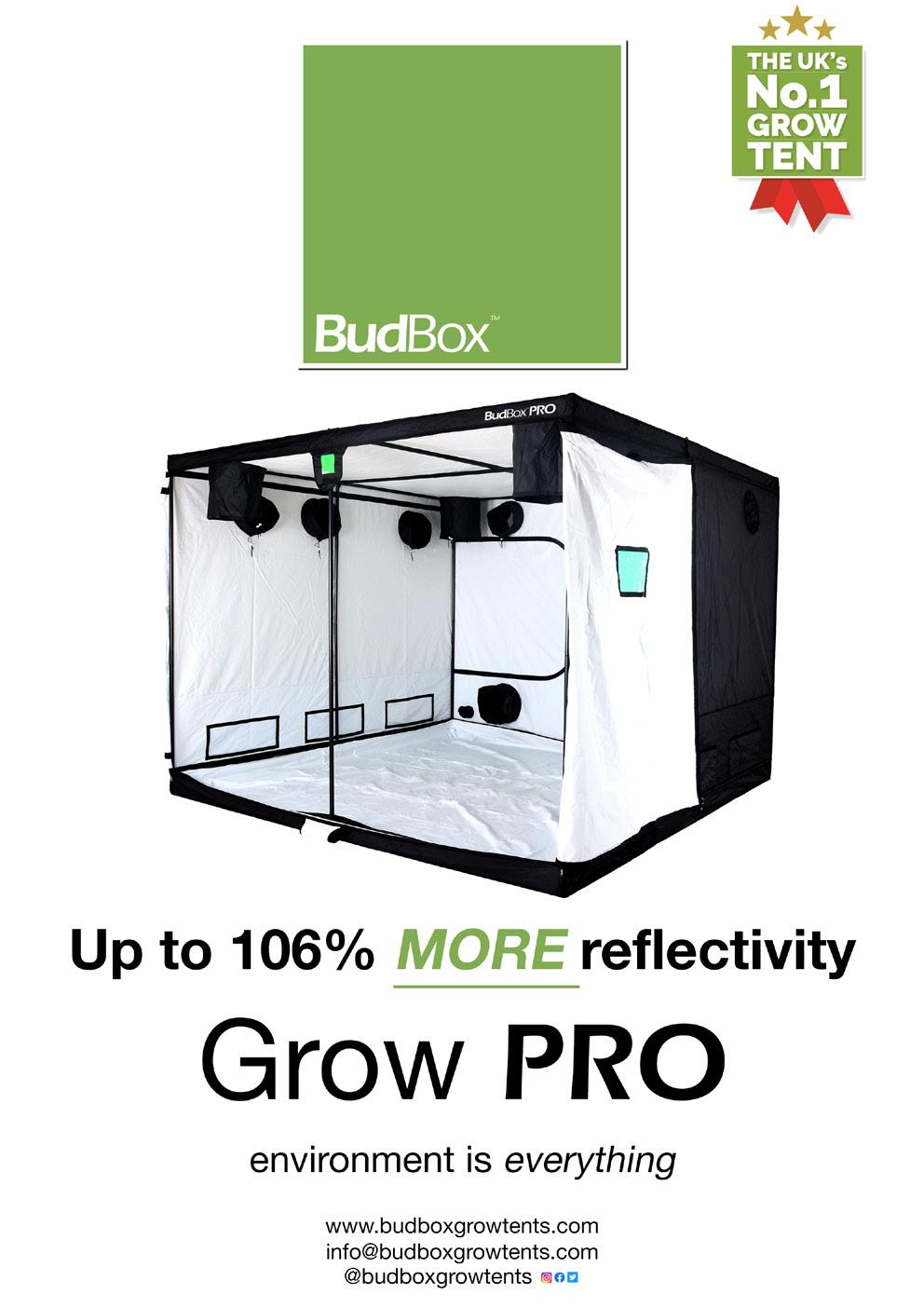
From building the farm and gardens to launching the employee farm-to-market programme, it has been an arduous yet fulfilling process for Tito’s Handmade Vodka. After seeing the success in its own backyard, Fourteen Acres Farm has inspired Tito’s to launch Block to Block , an initiative meant to give back to commu nities across the country and increase their access to nutritious food.


Over the past few years, Block to Block has teamed up with many nonprofit organisations and supported 90 different grow ing spaces. For example, in Oklahoma City, OK, this year, the programme worked alongside OKC Beautiful and planted 20 fruit trees at a local community centre. They also distributed 400 fruit trees to community members and groups to help boost the urban tree canopy and improve access to fresh fruit.
“One of my favourite Block to Block stories is our work with Shalom Farms in Richmond, VA,” says Lindsey Bates, Director of Philanthropy Operations at Tito’s Handmade Vodka. “This year, we were able to help support the expansion of their Northside Farm Site, which will give them the opportunity to increase the amount of produce they grow for their community from 44,000 pounds in 2022 to more than 60,000 in 2023!”
Back on the farm, beautiful produce continues to grow for Tito’s employees to enjoy and share with their families. Fourteen Acres Farm hopes to continue to build this unique programme and share it with other companies worldwide so that workers beyond Tito’s can benefit. More sustain able gardens, lower grocery bills, and healthier people in the world? That sounds like an incredible business model. Where can we apply? 3
BIO Catherine is a Canadian award-winning journalist who worked as a reporter and news anchor in Montreal’s radio and television scene for 10 years. A graduate of Concordia University, she left the hustle and bustle of the business after starting a family. Now, she’s the editor and a writer for Garden Culture Magazine while also enjoying being a mom to her three young kids. Her interests include great food, gardening, fitness, animals, and anything outdoors.
Fourteen Acres Farm hopes to continue to build this unique programme and share it with other companies worldwide so that workers beyond Tito’s can benefit
no growing venture is without problems, and Fourteen Acres Farm has faced its fair share of challenges in the fields, such as hurricane-force winds last spring
It’s time to take control of our food supply. Our reliance on the grocery store has reached ‘toxic partner’ status

Whether you like carbonara or curry, our selection of quality/affordable ingredients is dwindling faster than my confidence in my local hockey team. Start keeping your seeds and genetics like they are rare
Pokémon cards. Plant them and grow them. Do it, so you never have to pay $4 for a bell pepper again.
As an amateur chef, nothing chills the cockles of my heart like the lack of quality ingredients. A chef without necessities is like an artist without titanium white or Johnny Depp without red wine and a scarf. I have now asserted I will grow my own crop year-round. I will be as selfsufficient as possible because any grocer is essentially deficient and without merit in their interest in my nutrition rather than profit. The grocer is spitting in my face with the price of garlic, and it kind of makes me want to fight someone. You look at the shopping baskets of some people, and you can see them struggling to make a meal. I don’t like my heart breaking while I do my groceries.
grow room and snip a healthy chunk off the top. Imagine pulling out a basket of freshly picked chilli peppers in January while everyone else is paying $10 for a week worth of hot sauce. I can go on for days, but it’s up to you to find the crop that will benefit you the most during the winter doldrums.
It’s time to take control of our food supply. Our reliance on the grocery store has reached ‘toxic partner’ status. I am taking action to alleviate the stress on my pocketbook and protest the institutions that turned something so essential, like garlic, into luxury items like saffron or truffles. Don’t get me started on tomatoes, lemons, and limes.
Here’s the plan. Aside from planting my own garlic outside this past October, I am converting half of my indoor grow tents to my favourite and least affordable vegetables that I regularly use in my cooking. Fresh herbs like basil and chives will accompany hot peppers and red bell peppers. Green onions and aubergine will be flanked by sage and bay leaf. Everything will be grown under LED, which keeps energy costs down while the heat from the ballast will assist in keeping the room warm.
Winter in Canada lasts six months, so I expect the square footage allotted for this project to be a welcome subsidy to what’s usually available to me once the land goes dead from the cold. Imagine cooking a pasta sauce, and instead of a $7 handful of immature basil, you walk down to the
I understand not everyone has a bay window facing the sun or the space to install a 5x5 grow tent, but the benefits of having even the smallest countertop grow area that supplies bean sprouts or lettuce is a win for the consumer. Before throwing away the end of green onion or lettuce, simply put it in water, and a few weeks later, VOILA, free delicious veggies. Nature finds a way every time. A little initiative goes a long way; you will be rewarded.
To the big box grocery stores out there engaging in predatory pricing, offering half rotten produce, or looking me straight in the face, charging $14 for a pound of garlic, we will remember. It is difficult to win hearts back when you failed so miserably over the last few years. These Donkeys are still relying on antiquated grow methods. Someone should show them how to vertical farm. At the very least, I want the excuses about yields and harvest affecting the price to stop. It’s ok to have a bad season as an amateur gardener, but when you are in the major leagues of food supply, there is no room for failure and certainly no room for garlic that is priced like cocaine. I am excited to be doing what I love year-round.
Until these Grocery Gangsters smarten up, you go right ahead and self-checkout your way to equity. If you feel like putting six cloves of garlic in a cereal box and having the cashier ring it up as Rice Crispies, more power to you. I kid, I kid!
Happy growing. 3
BIO Regi Oneton is a multi-disciplinary artist and daytime executive. He’s been a member of Socan since his first album release at the age of 20, and is a self-taught audio engineer and self-proclaimed studio rat. Regi is a late-blooming street artist and painter whose works can be found hanging in the offices of Burton and Vans Canada. Long-time contributor to the Under Pressure Graffiti Festival and lover of the Arts. As the years plow forward, he has added botanical enthusiast/plant father to his litany of passions. His interests include writing and spending too much time looking at his phone.
Since neem compounds are biodegradable, use them regularly to maintain control
Neem trees are the source of many natural products humans have used for thousands of years. All parts of this evergreen tree are useful with many applications deriving from the plant’s anti-fungal, antibacterial, and insecticidal properties. Toothpaste, skin treatments, and teas made from the leaves are just a few well-known traditional neem products.


The neem tree, Azadirachta indica A. Juss., is a member of the Meliaceae, the mahogany family. It is native to India, Pakistan, Bangla desh, Myanmar, China, and parts of Africa, growing in arid and semi-arid conditions where temperatures stay above freezing year-round. Neem trees can also be found in other parts of the world where it has been introduced on commercial plantations and as an easy-to-grow shade tree. Although the neem tree has been successfully in troduced in tropical and subtropical regions worldwide, it hasn’t worked out everywhere. Neem trees have inad vertently spread to native forests in several African and Caribbean countries. In addition, neem is considered an invasive species in parts of Australia, where it grows so densely in some places that it interferes with human activities.
The neem tree is a prolific seed producer, and the seeds are an ex cellent source of bioactive compounds. Extracts of neem kernels were shown in the early 1960s to prevent locusts from feeding on various crops. Starting in the 1970s, the growth-regulating effects of neem extracts were investigated. From a biochemical perspec tive, neem is the source of hundreds of interesting substances. Of these, a group of chemicals known as triterpenes, specifically limonoids, is currently of greatest interest. Several limonoids ex tracted from neem seeds have shown the ability to interfere with insect life cycles. The most well-studied of these is azadirachtin, al though salannin, meliantriol, and Nimbin also contribute to neem’s activity.





When it comes to insecticidal properties, neem can be both a feeding deterrent and an insecticide. Although primarily considered a surface contact agent, some plant species may absorb neem terpenoids to maintain a systemic effect. Neem extracts applied directly to plants completely discourage some insect pests from feeding. The feeding deterrent properties are thought to be primarily due to the activity of the salannin, me liantriol, Nimbin, and other limonoids.
Other pests feed but are prevented from completing their life cycles. Azadirachtin is a potent insecticide, although it does not kill immediately upon contact. Structurally similar to insect hormones that control metamorphosis, azadirachtin interferes with moulting, resulting in death.
Salannin
Meliantriol
Nimbin
Although organic solvents can extract active compounds in more purified form, one cost-effective way to produce indus trial quantities of product is by cold pressing oil directly from the seeds. The neat oil or the oil remaining after azadirachtin extraction (which still retains some azadirachtin and many oth er active compounds) is a useful product. Clarified hydrophobic neem extract, as it is called, is effective as both a fungicide and a contact insecticide and miticide. For maximum effectiveness, apply the product at the first sign of an infestation (or before). Since neem compounds are biodegradable, use them regularly to maintain control.
All parts of this evergreen tree are useful with many applications deriving from the plant’s antifungal, antibacterial, and insecticidal propertiesThe neem tree is a prolific seed producer Azadirachtin



How safe are azadirachtin, the other neem limonoids, and clari fied neem oil? The US Environmental Protection Agency has ap proved clarified neem oil for use on food and ornamental crops and did so with a relatively minimal review. The EPA approval was based on laboratory and field studies, as well as neem’s long tory of human use, to conclude that neem extracts present little risk to people or the environment if used responsibly. Neem oil is essentially non-toxic to humans by ingestion or skin contact. Wild life is generally unaffected by exposure to neem oil, although there is evidence it can harm aquatic invertebrates and bees. Other than for one specific non-food use, neem is still not approved in Canada because no entity has applied for it.
One advantage of neem seeds is that they are low-cost and eas ily processed into an effective biochemical pesticide using simple equipment. This makes neem ideal for rural, small-scale farmers who can process the crushed dried seeds directly into a liquid for application using only soapy water.
Azadirachtin does not persist in the envi ronment due to rapid microbial biodegrada tion, is harmless for plants, and has minimal effects on non-target organisms when used properly. People have been consuming and rubbing neem products on their bodies for thousands of years, mostly without apparent harm. Of course, no substance is perfectly safe under all conditions, but neem products look pretty good relative to other pesticides.
The complete synthesis of azadirachtin announced in 2007 set off an interesting debate among organic chemists. The synthesis, worked out over 20+ years and requiring 64 reaction steps, is of no practical use in and of itself. Some scientists say such efforts are a waste of time and resources. At the same time, others defend the work as expanding natural product chemistry since new reac tions and reagents were invented to accomplish the synthesis. You won’t be seeing synthetic neem oil products on your local nursery supplier’s shelf soon since it is much more efficient to extract aza dirachtin and any other terpenoids of interest directly from neem seeds. That, and you can’t synthesise clarified hydrophobic neem extract. It’s likely to remain that way for quite some time. 3
For more information on neem and the neem tree, see:
• Neem, a Tree for Solving Global Problems, Natural Re search Council (US) Panel on Neem, National Acade mies Press (US), 1992. ncbi.nlm.nih.gov/books/NBK234646/
• Cold Pressed Neem Oil, U.S. Environmental Protection Agency Office of Pesticide Programs Biopesticides and Pol lution Prevention Division, May 7, 2012. bit.ly/2OvrA6Q
Bio Philip McIntosh holds a B.Sc. in Botany and Chemistry from Texas State University and an MA in Biological Science from the University of Texas at Austin. He has been publishing professionally for over 30 years in magazines, journals, and on the web on topics relating to botany, mycology, general biology, and technology. As a STEM (Science, Technology, Engineering, and Math) educator, Phil enjoys working with students to help them advance their knowledge and skills in relevant fields of learning.
Neem extracts applied directly to plants completely discourage some insect pests from feeding
Several limonoids extracted from neem seeds have shown the ability to interfere with insect life cycles


In Nature, there is no waste. Living systems recycle the excrement of one into the nourishment of the next as part of the great life cycle. To Nature, waste is not a nuisance but a valuable resource.
Humans, on the other hand, have superpowers. We can make up our own minds, manipulate our environments, and invent substances not recognised by the microbial recyclers who manage the life cycle. Then, when we are done with our “trash”, we decide it has no value and throw it in giant holes called landfills. The garbage is out of sight and mind, but it re mains a liability to us and the Earth. The scale and ingenuity in this process are incredible, but the foundational logic is lacking even with a surface review.
Plastic is a prime example of our waste problem. It is every where; some estimates say that humans are eating a credit card-sized worth of plastic every week. But did you know that it takes 1,000 years for a plastic bag to break down? Unfor tunately, the bags don’t break down completely. Instead, they photodegrade, becoming microplastics that continue polluting the environment—all for a plastic bag used only once.
We cannot keep this approach to life up forever. The riddle is that the negative impact generated by the plastic bag breaking down to microplastic, or the pollution placed in the river by the corporation in the name of profit, is not captured on the balance sheet. Instead, it is called an “externality” or a side effect of an industrial process that impacts everyone without being reflected in the cost of the goods sold. This prevents the business from being accountable for the costs and impacts. True cost accounting, a type of bookkeeping that calculates the effects on natural and social capital, can capture these costs to society, but how do we get there?

Money talks; transformational ideas must pay for themselves somehow. Fortunately, new tools like blockchain, carbon cred its, and other ecosystem service markets can help facilitate a pivot in land care and waste stream management. It is now good business and good politics to view these things through the lens of living systems; what is missing is the education re quired to see the logic and the profit in the approach.
If you have never taken a trip to your local landfill, make it a re quirement, especially for kids (and elected officials). Everyone should have a visual of the sheer volume of waste produced by human beings. It is astounding.
Within landfills, hundreds of micro-economies for the raw ma terials enter into the waste stream. Whether a specific landfill recycles a material or not depends on the cost-effectiveness of engaging the respective market. For example, in my county, plastic #1 and #2 are the only types that are accepted to be recycled. It is possible to recycle the other types of plastic, but there is no market that offers us a sufficient economic incen tive to engage, so it is put into the landfill.

This is a microcosm of the world we live in; no matter how much sense they make, many things do not happen unless they are deemed cost-effective. Landfill coordinators are doing the best they can, but they are at the mercy of the markets and the policies put into play by local governments. There are many factors to consider, but without systems thinking, it is difficult to see the solutions - waste is a dynamic problem that cannot be solved by linear thinking.
I live in New Hanover County on the southeastern coast of North Carolina, almost to the border of South Carolina, about an hour north of Myrtle Beach. It is the second smallest county in North Carolina and is almost completely urbanised; more than 70% of the 230,000 residents live in the city limits of Wilmington, a port city at the mouth of the Cape Fear River.
I am elected Supervisor of the New Hanover Soil & Wa ter Conservation District. It is an apolitical position and a state-level designation with a mandate to protect and enhance soil and water quality. For the last couple of years, I have been developing a conversation around natural land care and waste stream management that is now being implemented as on-theground pilot projects.
In the fall, in cooperation with the City of Wilmington, we start ed a Natural Turf Management Pilot sponsored by Stonyfield Organic in Olsen Park. This programme is designed to illustrate the positive impact of eliminating the toxic rescue chemistry ap proach of using synthetic fertilisers and pesticides and replacing them with regenerative methods and natural land care practices. Instead of trying to grow the plant at the expense of the soil, we perform soil testing, bring in compost, establish cover crops to speed up the process of soil regeneration and use organic inputs that grow the earth, not just the plant.
Some estimates say that humans are eating a credit card-sized worth of plastic every week
To Nature, waste is not a nuisance but a valuable resource


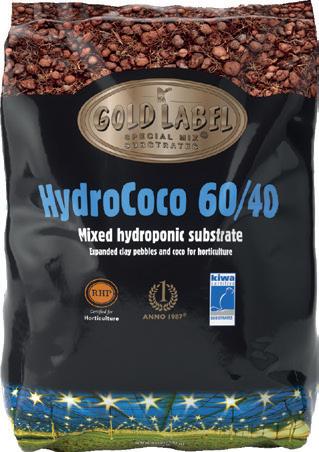
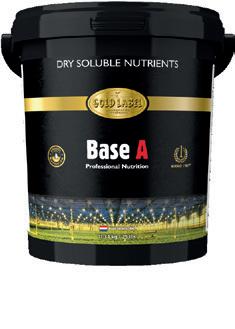



Beyond the benefit to public health, natural land care is part of a larger strategy of a fundamental pivot in waste stream management and an ef fort toward ending the landfill entire ly. More than half of any landfill can be composted, which not only diverts a significant volume of the waste stream filling up landfills but produces a mag ical substance called humus that is of untold value towards many of the challenges that we face on Earth.
Ultimately, it makes no sense to en courage living processes in our waste stream and then have a synthetic land care programme that kills the func tionality of the soil. Instead, these processes, and the pol icies that guide them, must inform one another, which is the goal of the Natural Turf Management Pilot.
Our entire region is growing rapidly; the population is booming, and tourists are streaming in to visit our local beaches and the bustling movie industry, so we are pro ducing a lot of trash. This is compounded by the consis tent impact of major hurricanes that we experience over time. For example, in 2018, Hurricane Florence devastat ed our region. The storm took approximately 15 years off the landfill’s life due to all the accumulated debris.
We now have only 23 years left on the New Hanover County landfill, meaning we are less than two storms away from filling up our giant hole. Because the county is so small, the State of North Carolina has legislated that we are not allowed to dedicate any more of our land to landfill. This is a literal landfill emergency, but follow ing the founder of permaculture Bill Mollison’s original
design principle, what a perfect op portunity to “turn a problem into a solution”.
The New Hanover County Envi ronmental Services Coordinator says that 70% of our landfill can be composted. Therefore, initiating a high-level bulk composting protocol could buy us time to develop a lon ger-term plan. It could also generate valuable organic matter to improve soil and plant quality, significantly increase stormwater retention ar ea-wide, and generate measurable carbon sequestration that the coun ty and city can use to meet greenhouse gas and emission commitments.
We have sophisticated operations at the New Hanover County Landfill with a staff dedicated to cutting-edge technology, such as an innovative constructed wetlands system for the treatment of landfill leachate and a double reverse osmosis wastewater treatment plant. We also have an in-vessel composting system named “Huckleber ry”. Still, while this is a significant investment and a strong signal to the public, it represents a drop in the ocean of organic matter coming through the landfill system.
Rather than the vision of buying another in-vessel system, we need to elevate our vision to the level of establishing mandated residential pick up of organic matter and com plete diversion from the landfill into a bulk anaerobic and windrow composting enterprise. With this effort, we buy time, we establish a solid ROI given all of the previously mentioned residual benefits and the market value of qual ity compost. Then, we can begin focusing on the other 30% of the waste stream.

Fortunately, new tools like blockchain, carbon credits, and other ecosystem service markets can help facilitate a pivot in land care and waste stream management
waste is a dynamic problem that cannot be solved by linear thinking
Approximately 20% of the waste stream cannot be composted but has some value, whether it be metals, glass, plastics, etc. Some of this material is already be ing recycled and placed into commodity markets. Still, some technologies turn glass into beach sand and nat ural resonance disintegration that can efficiently and cost-effectively micronise almost any material and turn previously unsalable junk into a valuable commodity. Again, an investment is required, but there is a solid ROI through value-adding material to engage commod ity markets.

The remaining 10% of the landfill with no economic value can be managed by waste to energy technolo gies capable of turning plastics, tires, medical waste, and other refuse into energy with zero emissions. The possibility of ending landfills is not new, but it is only now becoming a reality because cost and necessity are meeting in the middle.
With all of the new ideas emerging, it can be challenging to put this story together in a way that is approachable
to the general public and local decision-makers. Making investments to deal with our waste stream proactively upends existing and entrenched markets. It can appear expensive until we perform the true cost accounting of business as usual.
One thing is for sure; we are smarter than our systems show. We can turn landfill problems into solutions if we engage our local governments with a marriage of true cost economics and education. We can make it happen if we become local leaders and champion these new ideas with the public, and begin to build new systems that make the existing ones obsolete. If this resonates, reach out and let’s connect. 3
Bio
Evan Folds is a regenerative agricultural consultant with a background across every facet of the farming and gardening spec trum. He has founded and operated many businesses over the years - including a retail hydroponics store he operated for over 14 years, a wholesale company that formulated beyond organic products and vortex-style compost tea brewers, an organic lawn care company, and a commercial organic wheatgrass growing operation.
He now works as a consultant in his new project Be Agriculture where he helps new and seasoned growers take their agronomy to the next level.What we think, we grow!
Contact Evan at www.BeAgriculture.com or on Facebook and Instagram @beagriculture
The possibility of ending landfills is not new, but it is only now becoming a reality because cost and necessity are meeting in the middle




























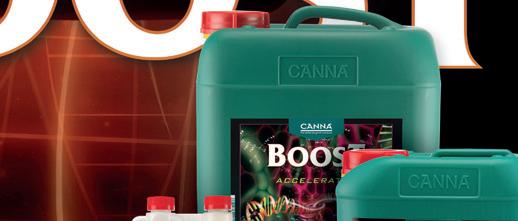






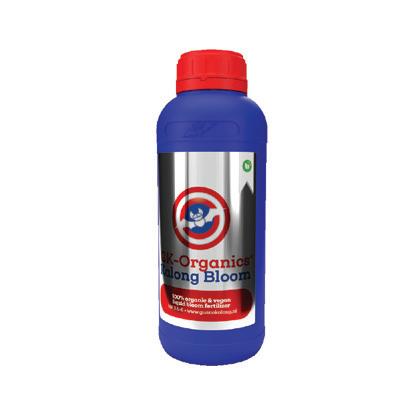
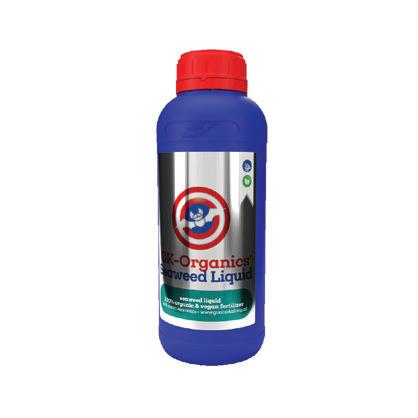



We couldn’t believe sunflowers, echinacea, petunias, and roses were blooming in our gardens by mid-October. We revelled in the extended growing season by taking pictures and posting on our Facebook and Instagram pages. After a cold, soggy spring, the garden had gotten off to a late start, but we never imagined the heat would continue for so long.

Daytime highs in the low to mid-20°C range meant picnics on the beach two weeks before the start of November in what is usually a rainy and cool British Columbia. What’s not to love about that? A lot, it seems.


Environmental scientists say climate change will cause extended growing seasons, long periods of heat, drought, and changes to the ecosystem. But experiencing it in real life is disconcerting.

Melanie Semlacher says that although the calendar signalled it was time to add compost and mulch to protect her garden over winter, she instinctively knew the soil was still warm. She worried that adding soil amendments would encourage growth when a dormant period was approaching. She kept seeing new buds on summer poppies and perennial geraniums. But it was what she didn’t see that worried her most.
Earthworms breathe through their skin, which needs to be kept moist. If it dries out, they don’t get oxygen and will succumb. That’s why they’re often spotted above ground when it’s rainy and at night when the air is wetter. The rest of the time, the worms live under ground, receiving oxygen through the soil [1]; they’re excellent for breaking down organic matter to improve soil health and the gar den’s vitality. But the ground was dry this fall, the air was hot, and the worms had vanished.
In Chilliwack, the lack of beneficial garden insects, like ladybugs, also caused Sheri Friesen concern. But it wasn’t until she dug 30 centi metres into the ground that the magnitude of the situation became apparent. Even though she’d been watering the garden daily and
adding moist kitchen compost, the underlying soil layers were bone dry, sandy, and not binding together as they should. The ongoing heat had caused extensive evaporation, and the soil lost its ability to retain moisture.
Friesen’s garden is packed with native plant species, specifically chosen because of their suitability to BC’s traditionally wet climate. For example, the maidenhair fern or Pacific bleeding heart, even in dormant periods, need damp soil [2]; their long tap roots burrow into the ground, absorbing moisture and nutrients. But the earth was dry, so they had nowhere to go.
We revelled in the extended growing season by taking pictures and posting on our Facebook and Instagram pagesBY JENNIFER COLE
Gardeners from British Columbia’s south coast describe changes to growth cycles, ecosystems, and soil cohesion after three and a half months of hot temperatures and no significant rain. Jennifer Cole shares several unusual experiences with heat stress this fall.Sheri’s petunias Sunflowers in late October Delphenium in October Mandevillia flower blooming in midOctober


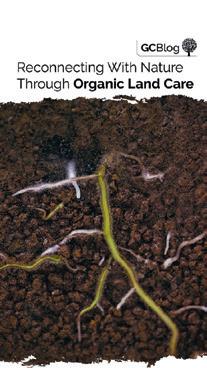

Our blog is where we bring you more than we can cover in our print issues; timely news, growing tips, and great ideas. Hundreds of growing articles are waiting for you.

In my garden, it’s what the heat was causing to bloom less than ten days before the start of November that caught my attention

In my garden, it’s what the heat was causing to bloom less than ten days before the start of November that caught my attention.
On Canada’s west coast, delphinium generally blooms between May and July when daytime temperatures are typically between 15-22°C and above 10°C at night [3]. If they’re cut back, they’ll often re-bloom early to mid-September. In October, they die back when tempera tures drop to the mid-teens (°C) during the day and below 10°C [4] at night. But with the beginning of November around the corner, delphinium was blooming in my garden; a massive display of the same flower at Vancouver’s VanDusen Botanical Gardens caused visitors to stare in disbelief.

The abnormally warm temperatures also impacted the vegetable garden. For example, gardener Darrell Phillips usually plants cool-sea son crops such as Brussels sprouts, kale, cabbage, and Swiss chard at the end of September. Capable of tolerating light frost [5], these are perfect fall vegetables to grow and harvest. But by mid-October this year, the heat hadn’t decreased, and the plants showed no signs of growth. Comparatively, in Friesen’s garden, she wondered if her heat-loving tomato plant would stop producing. And in Powell River, B.C., Heather Webb’s 100-year-old rhododendron suffered from heat stress, which further solidified her belief that all gardens have a rain catchment system.
Finally, things cooled down in late October, and the earthworms re appeared in Semlacher’s garden. Still, it makes me wonder and worry if more heat can cause this stalwart of the garden’s ecosystem to vanish forever [6]. 3
Sources:
1. Do Worms Prefer Dry Soil or Wet Soil? (bit.ly/3D0Mh4v)
2. Mother Nature | Native Plants of British Columbia (bit.ly/3Fd8kYq)
3. Almanac Averages and Extremes for October 16 - Climate - Environment and Climate Change Canada (bit.ly/3soDynM)
4. Delphinium Care Guide: Instructions + Tips | FTD (bit.ly/3TuRYie)
5. How to Plant and Grow Swiss Chard | Gardener’s Path (bit.ly/3MVL8jn)
6. Climate change effects on earthworms - a review - PubMed (nih.gov - bit.
Environmental scientists say climate change will cause extended growing seasons, long periods of heat, drought, and changes to the ecosystem

Have you ever considered growing organic produce but struggled to find the room? Sure, the palatial commercial
grow spaces and greenhouses are dreams come true. However, you can produce a surprisingly large amount of healthy, homegrown medicine in modest areas; you only need a little skill and ingenuity!
In small gardens, it is essential to get your timing right. To maximise the footprint and yield, keep the garden on a strict schedule so harvest and succession planting are never delayed. Doing so will ensure there is always something productive happening.
Achieving a quick turn-around isn’t too tricky. All it requires is some forethought on how long the plants need to flower. Then, consider when you need to start your clones or seeds, so the plants are not too over or under-developed for the next grow.
The most rapid changeovers will involve, at the very least, both vegetative and flowering chambers. Not all gardens have the space for this, but if you can make it work, it pays off in the long run. Even though you may reduce the total flowering area, you can accomplish a more efficient crop turnover. Your vegetative area doesn’t need to be as large as your flowering space; even something one-third of the size is plenty.
About three weeks into the bloom cycle, take clones from your mother plant or start fresh seeds for the next crop cycle. Typically, clones take one or two weeks to develop correctly, and seedlings will begin to thrive in the same timeframe. This schedule allows for three or four weeks of average vegetative growth on an average eight or nine-week flowering cycle.
If your variety is super vigorous, you can either advance when you start new plants or, in the case of slower-growing types, start them earlier to enable longer or shorter vegetative phases.

Optimising your growing environment is also critical. Plants can’t be expected to perform to their maximum potential if the air they breathe is dirty, hot, cold or too high or low in humidity. So do not skimp when creating the ultimate climate in the grow room. An old grower’s trick is to sit in the room for a while to see if it’s comfortable. If you can’t stand to be in there, your plants won’t like it either!
Small spaces often suffer from excessive heat build-up, and high humidity can become a problem, especially during the bloom cycle. Both of these are significantly improved by just allowing adequate airflow. Ensure the leaves of your plants can gently move and that there is no stratification of your air from top to bottom. Doing so will keep your plants happy and healthy.
Sometimes, airflow alone is insufficient, and additional environmental control is required. If using humidifiers, dehumidifiers and air conditioning units, always follow the three C’s (Cleaned, Checked, Calibrated) to ensure that you don’t have a malfunction at a critical time. There is nothing worse than losing a crop over the failure of doing some preventative maintenance.
The feeding schedule and watering strategies are other significant components of a thriving crop. Think about what you intend on doing and write it on a calendar or in a garden journal. Top organisational skills take out the guesswork, allowing you to offer nutrition at the correct times for the most benefit.
It’s always a good idea to purchase the supplies you need for the crop in advance. Having them on standby when you need them ensures that applications are well-timed. Also, having what you need on the shelf saves running to the store last minute only to find out they are out of your favourite product!
Careful plant selection is paramount to getting big yields out of smaller gardens. Large varieties will not be a good fit if you have low roof heights and cramped conditions. These days, most seed suppliers offer at least some information on the plant’s growth habit, so picking compact ones that yield well for their size will make the growing process much more straightforward.
Remember, small areas don’t have to mean small yields! All it takes is a bit of planning, and you can produce surprising amounts of highquality fruits in the tightest spots. 3
Achieving a quick turn-around isn’t too tricky. All it requires is some forethought on how long the plants need to flower
Hydro stores sell a variety of plant nutrients, fertilisers, and additives, claiming to give growers an edge whether on plant size, better flowers, or juicier fruits.
Making the right choice for your grow can be challenging in such a crowded market, especially with all the marketing smoke and mirrors. Of course, when growing food and medicine, gardeners invest time and money into achieving nutritious, flavourful harvests. But are any of these products necessary, and are they all the same with a different brand name? How do you know what to buy?

Determining the best nu trients for your crop can be confusing when growing indoors. In addition, many companies have multiple lines of nutrients and sup plements for different pur poses, which can intimidate the amateur grower.
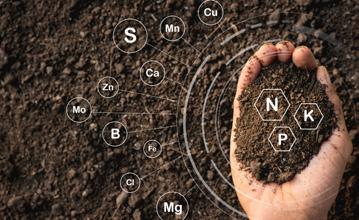
Most plants have two main life stages: the vegetative stage and the flowering stage. Plants must have the correct amount of nutrients at the proper times. All nutrient companies make products to meet these needs, albeit by using various formulas and techniques.
Each brand has different nutrient ratios for various prod ucts. A plant’s appetite will shift throughout its lifecycle. Plants in the vegetative stage have different demands than flowering plants, which vary slightly depending on plant species.
Still, all plants generally need three nutrients in the highest proportions: nitrogen (N), phosphorus (P), and potassium (K). The number of macronutrients contained in the for mula is displayed as the nutrient ratio or N-P-K ratio num ber, such as 10-5-7 on the label of most products. Always check the ideal NPK ratio for your chosen plant before purchasing anything.
Quality generally comes at a cost. Do not expect the cheapest nutrient bottle to do the same job as the most expensive one. The grade of mineral salts used in the nu trient product will affect ef ficiency. A low-priced bottle of nutrients will likely have industrial-grade (low-grade) mineral salts. Plants struggle to use these as effectively as a product containing pharma ceutical-grade (high-grade) fertilisers free of contaminants, such as heavy metals, pathogens, pesticides, and mycotox ins.
Better quality products come with assurances such as con sistent batch testing, a controlled manufacturing environ ment, and certificates of analysis. The ingredients, trace ability, and manufacturing quality should be a factor in the decision-making process.
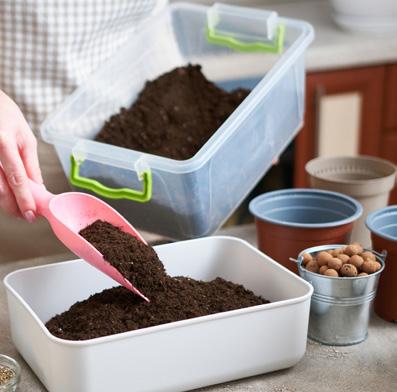
It’s essential to match the growing medium with the nu trients. Generally, hydro and coco nutrients contain everything plants need to grow. Water and coco are nat urally inert and contain no nutrients required for healthy plant growth and development. Soil is a substrate that al ready has mineral salt levels and microbial life. Therefore, the make-up of a soil nutrient will need to be more bal anced.
Raw Ingredients are essential and can make the difference between nutrients. For example, you can have two prod ucts from different brands with the same NPK ratio. But they can offer very different results based on the quality of the raw ingredients and the process of manufacture.
Hydro stores sell a variety of plant nutrients, fertilisers, and additives, claiming to give growers an edge whether on plant size, better flowers, or juicier fruits


















































Organic or Non-Organic Organic and non-organic nutrients are pretty different from each other. Organic fertilisers contain natural ma terials, such as bacteria, mould, insects, and worms. All these elements and other organisms will stimulate the soil, creating an environment full of beneficial life that can feed the plant. But organic fertilisers are not as readily soluble as mineral nutrients; they need to be broken down by or ganisms in the soil before the plant can take them up. The plant controls the amount, order, and time the elements are absorbed. Organic fertilisers can also help increase the plant’s resistance to pests and diseases.
Non-organic or mineral nutrients are not entirely formed via natural materials and processes. Instead, they occur after a chemical process. Unlike organic nutrients, all ele ments present in a mineral fertiliser are readily soluble and can instantly be taken in by the plant. Using mineral fer tilisers allows the plant to choose one or more elements needed at that moment. With mineral fertilisers, the pos sibility for a more steered/aimed fertilisation schedule is created; while meeting all the plant’s needs, it also gives more control to the grower.
Unlike organic nutrients, mineral nutrients do not contrib ute to the health of the soil. Unneeded salts can build up in the medium, damage roots, and cause a nutrient lockout. It is also much easier to overfeed mineral nutrients.
• Research the plant’s perfect nutrient values over its lifetime/cycle.

• What medium will you use? The rule of thumb is to use organic nutrients for organic sub strates, like soil, and use non-organic (mineral) nutrients with all substrates, including soil.

• Buy the best you can afford. The higher the quality of the raw ingredients, the better the results.
• Match the plant’s NPK needs to the closest ratio on a good quality product.
• Buy local! Online stores can’t compete with the customer service local stores offer.
Most nutrient companies have various supplemental prod ucts alongside their base fertiliser feeds. If you are new to growing and need help determining whether a product is a supplement or a fertiliser, check out the NPK ratio. Base nutrients deliver all the required NPK and micronutrients for healthy growth. Therefore, the NPK will be much high er. On the other hand, supplements have a much lower NPK ratio, like 0.2-0.2-0.1.



Remember, marketing revolves around convincing people they need a product, even when they don’t. Some supple ments are helpful, but using them excessively or unneces sarily can cause more harm than good. 3
An industry veteran with over 20 years of ex perience in a variety of roles, Rich is currently a business development manager for a large UK hydroponics distrib utor. The author of the Growers Guide book series, Rich also writes on all aspects of indoor gardening. He is also an independent industry consultant, working closely with hydroponic businesses worldwide.
If you are new to growing and need help determining whether a product is a supplement or a fertiliser, check out the NPK ratio
We all have a favourite brew that’s made in just the right way; a slight tweak here, a dash of cold water there, and a final squeeze of a tea bag. It turns out your plants are just as particular about what they drink. Of course, the ingredients they sip won’t be your cup of tea, but they certainly enjoy a special brew just as much as you.
So how do you make the perfect tea for your plants, and what constitutes a good brew?
The Perfect Brew
Take a deep breath. The oxygen filling your lungs? That’s where a good tea begins! The best compost and nutrient teas are aerated, promoting the growth of aerobic microorganisms beneficial to soil ecology and nutrient cycling.
The kinds of microbes fostered when brewing compost teas help create acids, enzymes and other organic constituents to break down into forms readily consumed by plants. Howev er, as part of the process, these microbes consume massive amounts of oxygen to complete their biological functions. The action you are trying to generate should resemble an active ly churning and bubbling stream, with no dead spots where anaerobic (potentially pathogenic) microbes can hang out. So before adding any microbial foods, boosters, or other ingredi ents, ensure that the actual brewing system is up to the task.

Various professionally designed and ingenious brewing sys tems exist these days, with some of the most advanced technologies utilising airlifts, vortex, and unique diffusers to maintain high oxygen levels, most of which are based on the incredible work Tim Wilson has done. But if you are handy or want to do small-scale brews, then adequate brewers can be built from components available at most hardware stores.
The most important thing is ensuring that the air pump meets the bare minimum amount for adequate aeration, around 0.5 cubic feet of air per minute for every 4.5L of tea made. Many people brew in 20L buckets, requiring an air pump with a minimum airflow of 2cfm. It’s almost impossi ble to aerate too much, so picking a larger pump won’t hurt.
You’ve likely already heard the many benefits that compost and nutrient tea brews can offer your garden, but how do you get started?
Let’s look at the exciting and turbulent world of these aerated brews!
Compost teas are excellent for boosting the microbial mass of your soil. A properly-made thermophilic compost that has been allowed to fully mature will contain incredible diversity that can be multiplied through brewing. The compost compo nents will affect the microbes that grow within it, so different types will be optimal for certain plants.
These microbe-rich teas help upcycle nutrients and balance soil life. Once the voracious microbe feeders hit your soil, they begin digesting the existing nutrition, making it more available. The tea also provides microbial byproducts that act as a glue to keep soil particles together and make them function as living organisms.


Once you have your vessel, you must fill it with clean water. Rainwater is best, but you can use other sources so long as they have no additives like chlorine and chloramine to in terfere with the growth of microbes. It’s recommended to burn off the chlorine by aerating the water in the brewer for 24 hours before adding the ingredients. More persistent additives like chloramine will need to be filtered out or neu tralised, so the microbes have a fighting chance.
Once the vessel is full and bubbling away, it’s time to add various ingredients that will benefit the garden.
Like compost teas, worm cast teas possess profound prop erties. Still, because worm composting is a cold system, meaning it isn’t heated like the thermophilic ones men tioned above, the kinds of microbes present are different. Contrary to what many people think, worms don’t eat veg etative waste. Instead, microbes begin to bloom and break down the vegetation, and the worms eat the microbes that eat the vegetation. Therefore, the worm castings are packed to the brim with organisms enriched directly by the worm’s digestive tract, carrying enzymes and other by products. When you brew it, you can effectively introduce these benefits through watering.
how do you make the perfect tea for your plants, and what constitutes a good brew?



Wheat bran, alfalfa meal, barley, fish hydrolysate, feath er meal, blood meal, bone meal, kelp concentrate, and humic acids stimulate the microbes in actively aerated teas in different ways.
Sugars can be added as well, such as unsulphured black strap molasses. However, too many sugar-based inputs can promote lazy microbe populations.


There are two primary kinds of aerated brews: nutrient teas and compost teas.
Nutrient teas are brewed to apply diluted amounts of or ganic amendments made readily available by predigesting with microbes. A nutrient tea is closer to a regular fertilis er application. The tea contains microbes; even yeasts and natural environmental microorganisms will be present in the amendments themselves. If you’d like, you can include storebought microbes, specifically bacteria, before or after brewing.
Compost teas and those made from worm castings or similar (even soil teas) are all brewed to multiply the microbes already present. These make nutrients more available for a longer period and help improve soil health. However, they contain relatively low nutrients themselves. Once the microbes are de livered to the soil, they do all the work.
Depending on your garden’s needs, you might choose a mixture of different types of tea throughout the crop cycle to maximise microbial counts and nutrient levels.
Brewing times also influence the kinds of microorganisms pres ent and the tea’s properties. Bacteria are the first to spring into life in an aerated tea; brewing times up to the 12-hour mark produce a mostly bacterial-dominant brew. Fungi and other higher-order microbes come into play after this window, so brew for anywhere between 24 and 36 hours for a tea rich in metabolites.
When finished brewing, your tea should smell good! Earthy, mushroomy-type smells are common, but sour or sulphur-like odours are a sign that something went wrong in the brewing process. Use the tea as soon after brewing as possible. Once the aeration is removed, the microbes will begin to die off, so get it into the garden ASAP! 3
Compost teas are excellent for boosting the microbial mass of your soil





When it comes to growing plants indoors, many well-priced products are available for those on a budget, and some high-quality ones cost a small fortune. But are the more expensive options worth the investment? It depends on what you are expecting from the equipment!
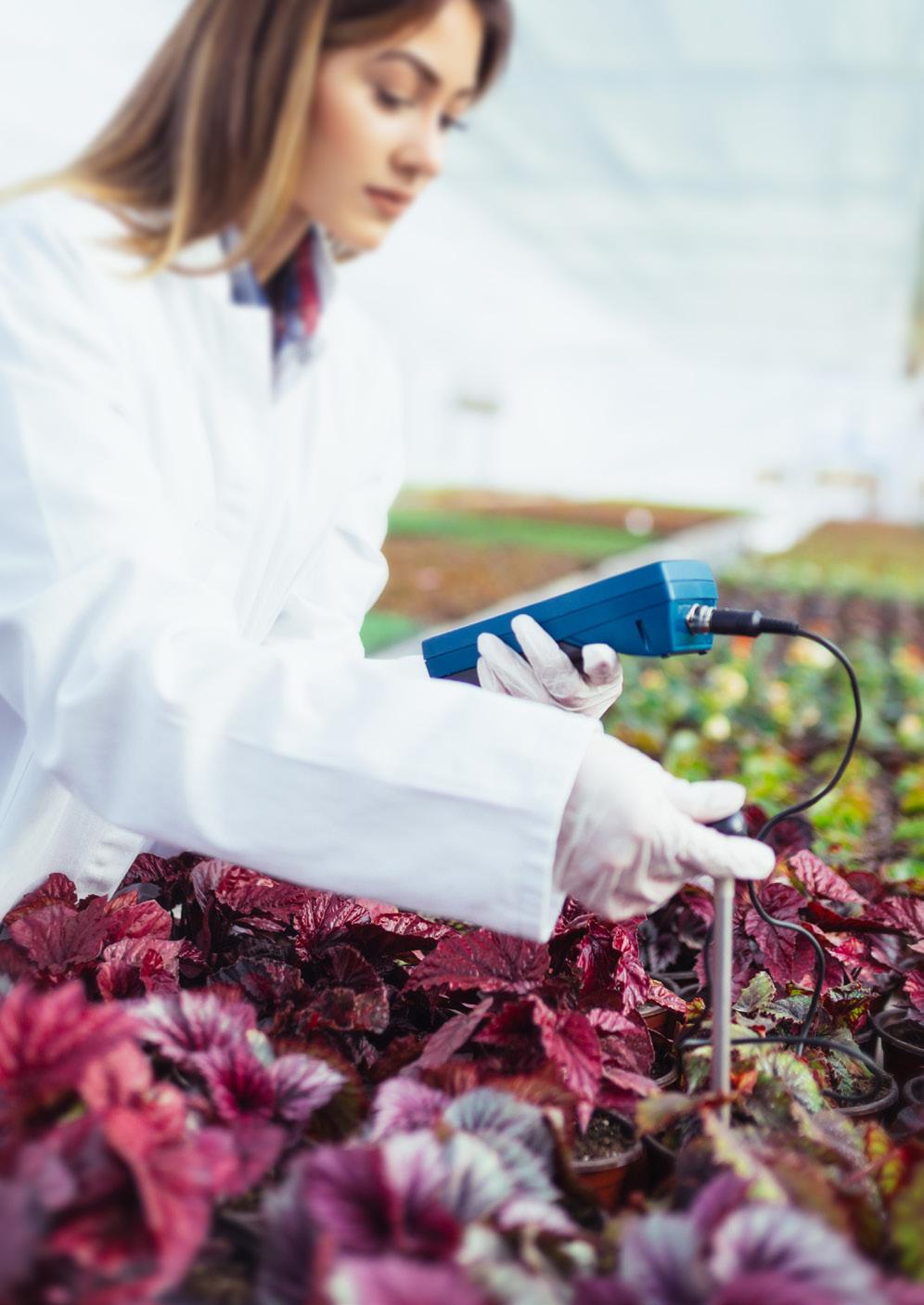
Plant material or nutrient solution samples are often sent to independent, accredited laboratories for elemental analysis. The testing helps diagnose nutrient deficiency and toxicity. Microbial testing will detect phytopathogenic and human pathogenic fungi and bacteria and pick up any pesticide presence along with primary and secondary metabolite concentrations. Each problem or deficiency requires a different method ology, instrumentation, and expertise to quantify or detect.
Working in labs for over 15 years, I have seen my fair share of instrumentation, from half-million-pound mass spectrometers to 50 quid pH meters—both measure different things, not only physically different but with varying levels of accuracy and sensi tivity. Within the analytical labs, equipment is regularly maintained through servicing, calibration, and regular use, giving more reliable and reproducible results.
However, even if regularly maintained and calibrated, expensive equipment can produce false positive and false negative results. Inaccurate results occur due to other compounds and materials in the test substance. These additional components create what is known as interference, so the instrument becomes confused and reads inaccurate results. To avoid such a situation, the best thing to do is speak to the lab and ask them about their methodology and whether anything present in the samples could cause interference. Using accredited, independent, and reliable labs that follow GLP is also wise.
In commercial greenhouses, nutrients are dosed via a pre-pro grammed dosing machine. Over the last decade, these have devel oped leaps and bounds, with online monitoring of the elemental content and, therefore, dosing based on the plant’s needs. For example, the pH can automatically be altered when sensors de tect it is out of range. These have evolved to a point where they use cloud-based artificial technology, which builds profiles based on the data feed over time. This technology also monitors envi ronmental conditions such as temperature, humidity, and lighting schedule. The equipment can prescribe feed regimes based on the plant’s environment and alerts the grower to changes, making it possible to alter the environment from a remote location. There is still a long way to go with this type of technology, but it will not be long before more features become automated.
Instruments and tests that measure microbial content, terpene content, elemental concentrations, and other metabolites are available for hob by growers. But are these pieces of equipment worth the money, and are they even accurate? Before pur chasing any analytical or automated equipment, ask yourself the following questions:
• What will I gain from knowing this piece of information?
• Will I regularly use this piece of equipment?
• Will I be able to maintain the equipment through calibra tion and servicing?
• Do I have the skills and knowledge to use this piece of equipment?
• How accurate do I need the results to be?
• What will it cost me if I do not have this equipment?
The results are only as good as the equipment you use. If you don’t have the time or the patience to maintain the equipment, do not bother wasting your money, as the re sults will likely be false.
Ensure the equipment you purchase is within your skill set. Some of the equipment available today requires training and program ming knowledge. But while the results obtained may be more accurate, assess whether you need precision results for what you are measuring. If you do not understand the equipment and find it difficult to operate, you will not use it. Sometimes, the simplest equipment will yield the best and most reliable results, as less operator error occurs. For example, a simple max/min thermometer can monitor the temperature and humidity in the grow room when you are not present. It will give you an idea of a range of things the plant experiences rather than an in-depth, minute-by-minute analysis.
Ultimately, you need to know what it will cost you if you do not have the piece of equipment in question. Will there be an impact on yield, crop health, or your time? Do some research before spending a lot of money on fancy equipment. Ensure it is fit for purpose and find out what maintenance is involved. While the equipment may look incredible and promise fantastic results, it may not be what you need for your garden. 3
Dr Callie Seaman is a leading expert of the UK hydroponic industry and became passionate about medicinal cannabis when she was diagnosed with epilepsy over 20 years ago.After obtaining a Biomedical Sciences degree at Sheffield Hallam University, she completed a PhD titled “Investigating Nutrient Solutions for Hydroponic Growth of Plants”. During her PhD, she became a founding director of Aqua Labouratories Ltd – a formulator and producer of specialist hydroponic nutrients. In October 2018, Callie became a non-executive director of a home office licenced medicinal cannabis facility within the UK. She consults with a wide range of other licensed producers worldwide as they look to set up their facilities.With numerous scientific articles, book chapters and peer-reviewed papers to her name, Callie is an experienced professional in the field of medicinal cannabis, cultivation and fertiliser science.
@dr.callieseaman @DrCallieSeaman @dr_CallieSeaman linkedin.com/in/dr-callieseaman Web: aqualabs-uk.com & cbdhempire.co.uk
Working in labs for over 15 years, I have seen my fair share of instrumentation, from half-million-pound mass spectrometers to 50 quid pH meters













One of the most important aspects of control for an indoor growing facility is temperature and humidity control. Most people don’t realise that controlling the temperature ramping (rate of change or amount of time to change temperature) can help stop many other problems in your grow. It is imperative to control the speed at which your temperature changes to maintain the best environment for plant health. It is also essential, if possible, to have your temperature ramping integrated into all your equipment. The minimum should be your dehumidifier, AC, and lighting.
Every aspect of what you do in your space with mechanical equipment caus es changes to your environment. For ex ample, if you have a dehumidifier in your space, simply turning it on will increase the temperature in the room by about 30% of the total energy consumed by the unit. A dehumidifier is the same as your AC system. However, it is all in one box. Anytime your dehumidifier is running in your space, you might as well have turned on an electric heater. When the DH is on, your AC needs to run harder. Can you imagine what would happen if your AC knew that the DH was about to come on?
When you run your lights in the space, they also drastically affect the temperature. The AC runs continually to maintain a lower temperature when the lights are on and heat the room when the lights are off. I always assume that growers with AC in their small spaces have mini-splits that can also heat. Consider installing some if you don’t have separate heating for your lights. In the morning, when the lights go from 0-100%, they cause a sudden increase in temperature in the room, which can stress your plants. It is better to give the plants a sunrise/sunset approach and let the AC
know the time so it can slowly ramp up and change conditions. If you think about the real world and how the sun and outdoor temperature work, this is very similar to outdoor growing. Again, can you imagine what would happen if your AC knew the light con ditions before it changed room set points?
For your grow to be able to control temperature ramping correctly, you need to know in advance and predict what will happen next. Most new lights come with lighting controllers allowing a sunrise/sunset without extra cost. Most of these simple lighting controllers will also do the sched uling of your lights. At a minimum, you must also ensure you are running your AC on a system that can schedule and know the increment of the lighting change. Then, you can match your AC to the lighting increases and slowly ramp your temperature up or down. With a low-cost solution, you should be able to get your AC/lights synced, which will significantly help your efforts in maintaining a consistent temperature without significant swings.
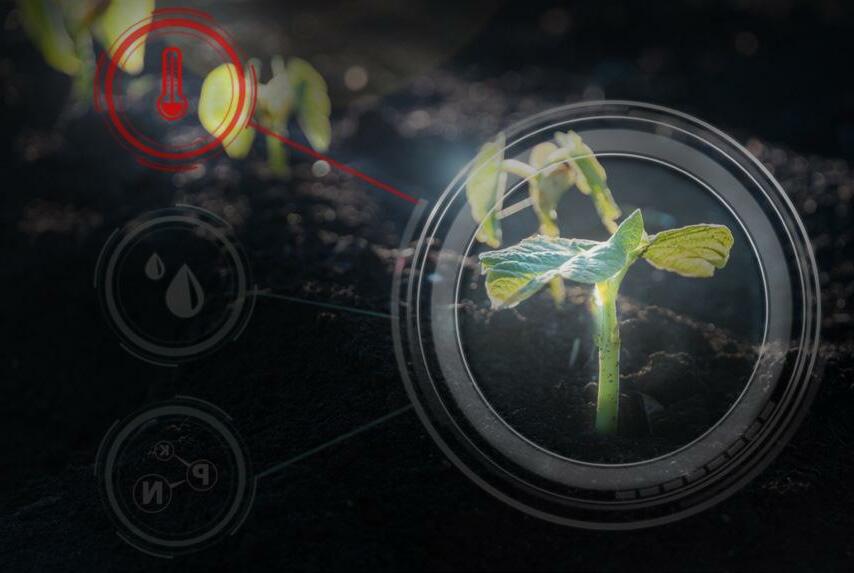
Most people don’t realise that controlling the temperature ramping can help stop many other problems in your grow





Most of what I have touched on with lighting assumes they can dim 10-100% and generally corresponds with running LEDs. LEDs are very easily dimmable and, in turn, are very easy to con trol room temperature ramping vs HPS. HPS light fixtures tend to only be able to go to 50% dimming, and there is always the discussion about light degradation. If you are running HPS and can’t modulate your light-dimming levels, consider putting your lights on a staggered timer so they’re not all on or off simulta neously. By staggering the light on/off time, you can help control your room temperature swings.
If you have some extra money to spend or operate a larger facility, I recommend a controller like Reliable Controls, DDC (direct digital controls), which is used in large-scale grows and commercial buildings. With DDC, we can also loop in the de humidifier and any other mechanical equipment in the space. If lights don’t turn on right, ACs fail. The DDC system knows and can correct the space conditions. It is essential to use DDC in large buildings so we know what is happening all at once and can better predict and change in advance. For example, if your lights only half turn on, the DDC will see less par and be able to send an alarm to the owner saying all of the aren’t on. The
In the morning, when the lights go from 0-100%, they cause a sudden increase in temperature in the room, which can stress your plants

DDC will also be able to change the room’s temperature to account for the lack of lighting. DDC also allows you to custom ramp/change your conditions from your cell phone anywhere in the world.
Whether you are a large-scale or small-scale grower, you need to be concerned about your temperature being stable and slowly ramping it up and down. Sudden changes in room conditions will help things like powdery mildew proliferate and give you more stress. Change one thing at a time in your grow and try to avoid any sudden swings! 3
Adam has provided planning and design services for cannabis and hemp cultivation and processing facilities over the last seven years with Stratus. His projects involve outdoor cultivation, indoor cultivation, drying, processing, extraction, storage, bottling and packaging, and more. Living on a hobby farm, Adam loves all plants, including flowers, vegetables, and microgreens, but is most passion ate about hemp and is in awe of the fast-growing plant and all of the benefits it offers to humans and the environment alike.
By staggering the light on/off time, you can help control your room temperature swings
Neighbours thought they were out of their minds to consider growing tea plants.
He thought if this supposedly sensitive plant could grow in England, it could grow on Vancouver Island
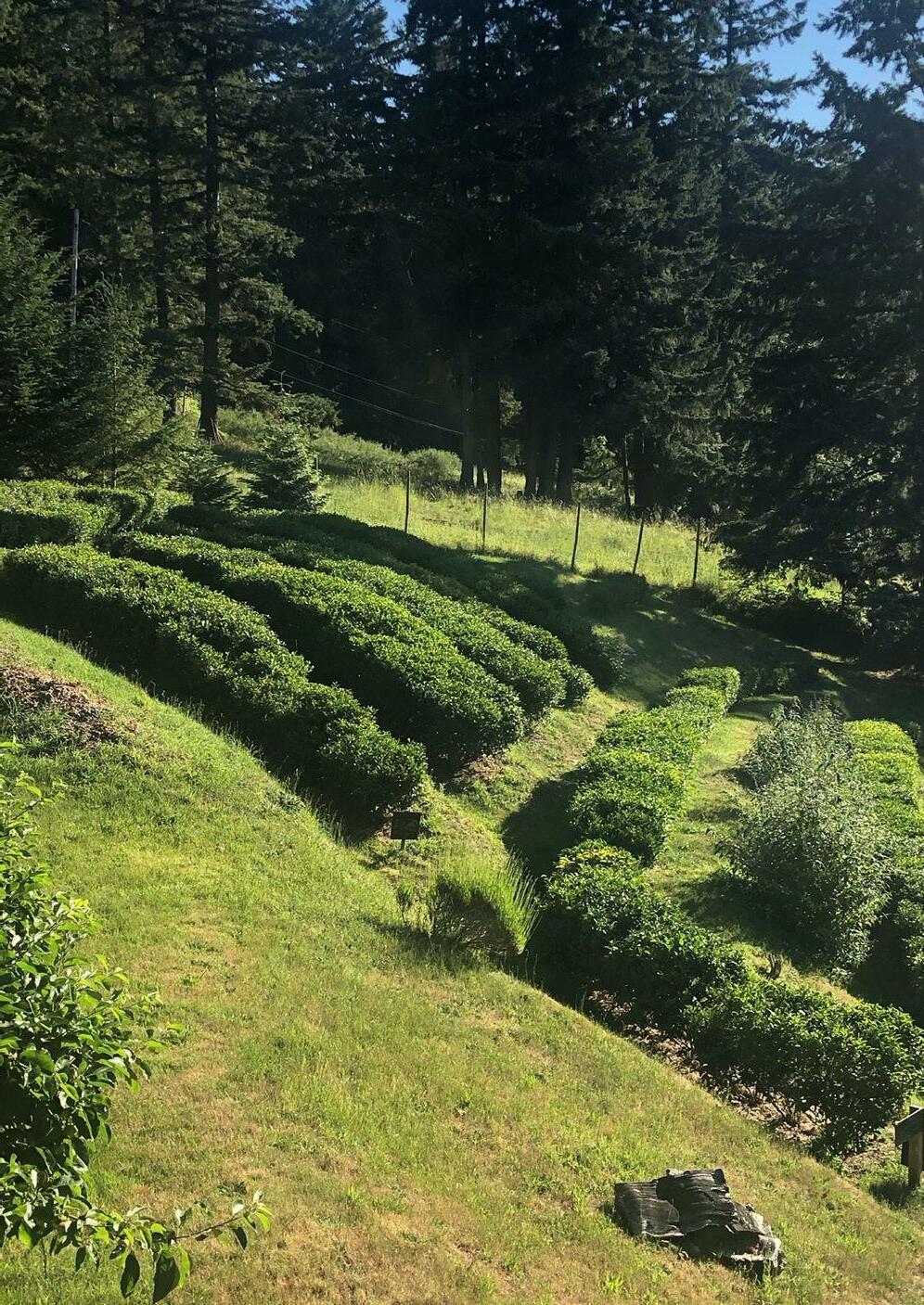
It takes courage to attempt something new but, as the saying goes, you’ll never know unless you try! On Vancouver Island, Victor Vesely and Margit Nellemann operate Westholme Tea Company, Canada’s first and only commercial tea farm.

In 2003, Vesely and Nellemann left the city’s hustle behind for the artisan lifestyle; they were drawn to the relaxed pace and lush landscape of the Cowichan Valley, an hour north of British Columbia’s capital, Victoria. So they bought a farm and settled in.
Nellemann set up a pottery studio, and Vesely got to work planting lavender and edibles to sell locally. Although local artisan work was popular twenty years ago, farmer’s mar kets were few and far between and locally grown organic produce wasn’t a hot ticket item.

But then, inspiration struck. Nellemann was already blend ing imported teas and local tisanes to sell in the farm’s gift shop to accompany her handcrafted teapots and cups. So it just seemed logical to evolve and grow tea.
Vesely says neighbours thought they were out of their minds to consider growing tea plants (Camellia sinensis). Even Ag riculture Canada’s website clearly stated that farmers could not cultivate tea crops in Canada because they are pre dominately suited to tropical and sub-tropical mountainous regions.
Knowing it was being grown and harvested in Cornwall, England, Vesely was undeterred. He thought if this suppos edly sensitive plant could grow in England, it could grow on Vancouver Island. The climates are, after all, remarkedly similar; mild winters and warm summers. In 2010, they pur chased hundreds of Camellia sinensis plants and gave them a home on a south-facing slope, where conditions were op timal with good drainage and loamy soil. It takes five for Camellia sinensis to become a tea leaf producer, and the couple nurtured, pruned, and watched the plants grow along the way. Finally, in 2016, the first of home-grown Canadian terroir tea was poured! The wait had been well worth it.
Vesely says he learned everything he knows about grow ing and harvesting tea plants through experimentation and hard work. He points out that because no one has com mercially cultivated tea in Canada before, there’s already a lack of available resources. This, combined with how se cretive tea growers can be about their methods, has creat ed many challenges to such a growing venture. Vesely has leaned upon the work ethic instilled in him by his father, who taught him that anything is possible if you work hard and believe in yourself.
It takes five years for Camellia sinensis to become a tea leaf producer, and the couple nurtured, pruned, and watched the plants grow along the way
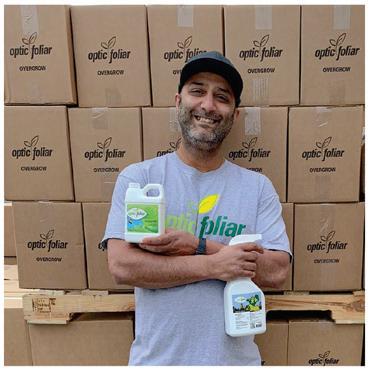

While herbal teas are often steeped using all parts of a plant, terroir, or true tea, is harvested exclusively from the new leaves of the Camellia sinensi s plant, which are then oxidised to create varying types of tea such as white, green, black, and more. The leaves need to be harvested after they unfurl and before they have time to develop. Vesely says he’s learned that when the plant is ready, he better be too.
Tea, he says, is a lot like growing grapes. Not only does the harvest need to be timed right, but the region’s terroir, such as climate, soil, and rainfall all impact the tea’s flavour and help determine if it ends up sweet or woody in taste.
In 2021, the climate proved the biggest challenge to date. First, British Columbia was hit with a historic heat dome, and temperatures climbed to 43°C. The blistering heat didn’t bode well for a plant preferring temperate conditions, and some succumbed. Then, as the winter rolled around, tem peratures plummeted to -17°C. This is the extreme of what the Zone 7 Camellia sinensis can tolerate. It was a nail-bit ing experience, but Vesely says Nature always teaches you something, and the plants proved hardier than he had even given them credit for and, thankfully, recouped.
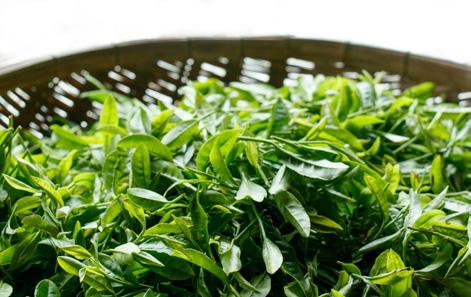
Vesely says they’re not worried about others picking up the tea torch and competition; he’s old school and prefers quality over quantity. So everything’s done by hand, and they work with Nature as much as possible. The plants are not fertilised or covered in winter, and watering is kept to a minimum. This approach helps the plant’s three-metre-long taproot dig deep into the ground, soak up water naturally, and, ultimate ly, become healthier and better established.
At Westholme, Vesely and Nellemann are creating a tea cul ture. For thousands of years, tea has been the conduit that’s brought people together to make memories and share histo ry. They’re building on that tradition and are looking forward to a time when quality teas are chosen for their identifiable terroirs (like a fine wine) and added as ingredients in entrees and desserts.
Time moves at a more relaxed pace in the Cowichan Valley. Perhaps it’s the rural location or because folks enjoy a cup of tea while letting life and its flavour unfold naturally; this is a philosophy cultivated at Westholme. Pinkies up! 3
BIO Jennifer Cole is a writer and garden enthusiast with a bachelor’s degree focused on history from Simon Fraser Uni versity, and a freelance writing career spanning two and half de cades, Jennifer lives in Vancouver British Columbia. Her by-lines have regularly appeared in the opinion section of the Toronto Star and her portfolio includes articles in various newspapers, magazines, and websites across Canada. When not writing her own blog or visiting local garden centres, you can find her put tering, planting, and nourishing her own urban garden oasis.

Not only does the harvest need to be timed right, but the region’s terroir, such as climate, soil, and rainfall all impact the tea’s flavour and help determine if it ends up sweet or woody in taste
In 2021, the climate proved the biggest challenge to date




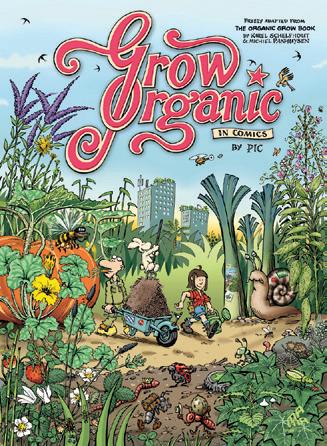
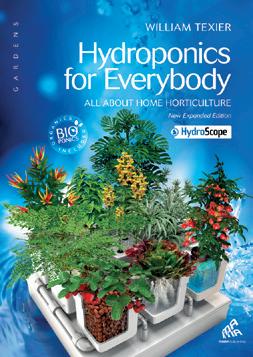
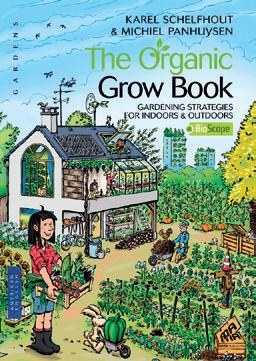


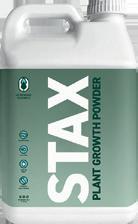

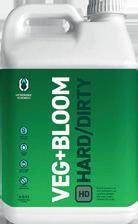


 Distributed in the UK by
BY MARTYNA KROL
Distributed in the UK by
BY MARTYNA KROL

Moss Side has a reputation for being a dangerous place, one with dark back alleys with overflowing bins that attract fly-tipping. That was the reality Mark started with when he moved to the area with his wife. His attempts to change the place started with putting some greenery near the bins, engaging a few neighbours with building planters and upcycling objects like baths to create garden areas. This has not only stopped the fly tipping but also created an area for the surrounding community to enjoy. Mark has created artwork of etched mirror perspex along the alley, featuring quotes and lyrics by famous people who came from Moss Side, including Anthony Burgess (the Clockwork Orange author), Barry Adamson (Mercury Prize musician), and the suffragette, Emmeline Pankhurst, to name a few. Despite the council not clearing the bins that week, the launch was grand and proved that you can have an art gallery in an alley. As for 2023, Mark plans to continue planting and adding to the artwork. There are also plans for mini concerts by the students of nearby Royal Northern College of Music, and their neighbour, Lavender Rodriguez, a composer and event producer. Proof that you can build a community anywhere as long as people care.
Learn more: a.moss.side.alley.greening



London 2.

Paco grew up where tomatoes are wonderfully sweet and then travelled to a country a thousand miles away where the sun stops shining in the garden in mid-September. What a contrast! Paco’s growing space is a northfacing roof terrace in London, but it blooms all spring and summer thanks to the local microclimate. Aside from potatoes, lettuce, herbs and berries, he’s growing heat-loving peppers and several varieties of tomatoes in his greenhouse. Companion plants are in place along with a good dollop of weeds; after all, the ecosystem for various insects must exist, even if it’s on a sky-high roof. In autumn, everything changes, and plants need a little TLC. They’re often tucked in with cosy jumpers; plant pots are covered with fabric to keep them snug, and the greenhouse gets a bubble wrap coat too. The wind can be relentless there, and the structure needs to be weighted down just in case it flies away across the streets of London like something straight from the world of Harry Potter. For Paco, though, this whole dualcountry experience is an exciting adventure. It’s worth taking a look at what he’s been up to on his Instagram.
Learn more: pacospatch










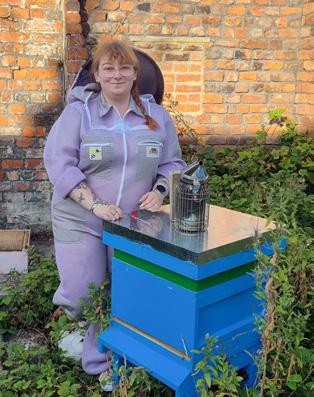
I’ve heard about emotional support animals before, but a colony of bees is a first for me, though as a former beekeeper, I can understand why. For Crazy Little Bee Lady, the love of bees and insects began when she was young and mesmerised by the various stories passed through generations and cultures. During some emotional time in her teens, she asked her mum for a pet duck, a request refused. The compromise was a nucleus of bees, a rather strange but perfectly appropriate birthday present for Rachel. Living with mental health issues isn’t easy, and the bees provide a calming hobby. Upon opening the hive to inspect the bees, problems and stresses blur away as focus takes over; the sweet smell and meditative buzz of the colony is a grounding and therapeutic experience, with mutual respect between the bees and the beekeeper. Any mistakes and loss of focus could be painful lessons. For Rachel, bees have always provided a space where nothing else mattered. Being in an urban environment, the bees have to forage among small yards on a dense housing estate, often relying on inexperienced gardeners potentially using pesticides and herbicides. Her social media presence educates about this issue; with more land disappearing to human infrastructure, the forage areas are threatened. Some of the products she creates (chocolate honey, anyone?) are intended for sale, however, purposely at a lower price so they are accessible to all.
Learn more: crazy_little_bee_lady facebook.com/crazylittlebeelady
Some of you may be familiar with Aggi’s friendly voice, heard at the end of the phone line at Mills Nutrients. However, I didn’t know until recently that she has an impressive collection of house plants that glow with green splendour. As a fellow Polish native, I related when Aggi said she couldn’t remember when she wasn’t interested in plants. Polish people take plants seriously. For Aggi, the indoor journey started when she moved during the pandemic and suddenly found herself without any outdoor space. Having plants inside was an easy and inexpensive way to bring nature indoors. Starting with the most common species, such as pothos and spider plants, she expanded the collection to several aroids, which are now her favourite. The key to getting great plants is participating in plant swaps locally and via traditional mail routes. Aggi prefers small plants so she can nurture them to perfection, watching how each node produces a beautiful leaf. Indoor plants require a lot of maintenance, and whilst for some, this may be a bit of a chore, for Aggi, it’s a chance to experiment with different mediums and nutrients.
Learn more: _leaf_an_impression

The horrors of heat stress! When things get a little too toasty in the garden, your plants will be quick to let you know with signs like wilted, curled, and discoloured leaves and dropping flowers. If this all sounds too familiar, you’re not alone. Heat stress is common in indoor growing spaces where environmental control can be tricky. And with the planet warming and more areas experiencing prolonged periods of drought and extreme temperatures, outdoor gardens also feel the pain. Luckily, there are things you can do to not only treat heat stress but prevent it from happening altogether. Remember, if it’s too hot for you, it’s too hot for your plants. So help keep them happy with our 5 Cool Ways To Beat The Heat In The Grow Room.
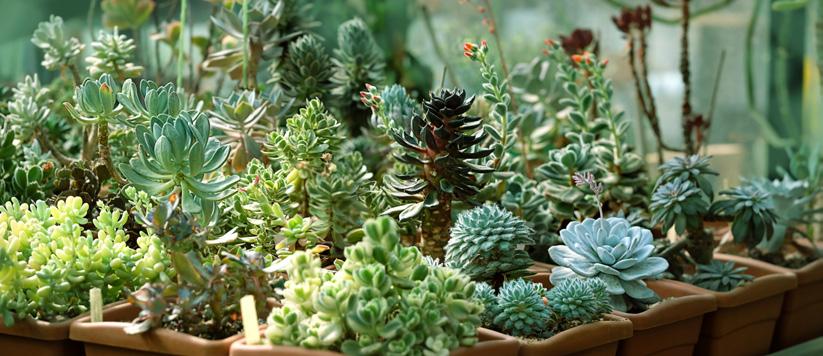
Plant selection is one of the most fun things about growing, and it’s turning out to be one of the most crucial parts too. When planning your garden, whether indoors or outdoors, it’s essential to choose plants that will grow well in your region or the indoor environment you create. From flowers to vegetabless, many varieties and strains are remarkably tolerant of heat and drought conditions. When temperatures peak, they’ll thrive, and because they’re built for the heat, they’ll be pretty low-maintenance, requiring less water and attention than vulnerable plants. Before you get growing, research seeds and read plant labels. Why stress about the heat when you don’t have to?
Just like you might love a cold glass of something during those dog days of summer, your plants enjoy a special drink to help them beat the heat. Many studies have shown that liquid seaweed and kelp can be a saving grace to your garden in so many different ways. Foliar feeding your plants with a liquid kelp solution will help wilted leaves bounce back sooner and create a larger root system that can better search for moisture pockets. You can also use kelp and seaweed in a soil drench to deliver a wide range of essential nutrients, helping boost plant growth and yields while increasing resistance to pests and disease. Many growers are also using silicon products these days. Although not necessary for healthy plant growth, silicon’s benefits are plentiful, including stronger cell walls and stomata, allowing for better growth and control of water loss.
Growing indoors can present many challenges, and too much heat can be a significant problem. Environmental control is crucial to the overall health of your crop; investing in the proper equipment will cool things down and keep the grow room running smoothly. Ensure the ventilation system is up to par; experts recommend installing an exhaust kit to remove excess heat from the room and dump it outside. An intake system can bring cooler air into the room. Portable AC units and dehumidifiers are also an option for growers, and fans are an inexpensive way to keep the air circulating. Your plants will be cooler, and the breeze will help strengthen them too. You’ll need basic thermometers and meters to keep track of the temperature and relative humidity; a non-contact thermometer will measure and control the temperature at the leaf surface. Once you’re set up, you can automate it so that you’re always in the loop, no matter where you are. Stress? What stress?


If your ventilation is working correctly and your plants still seem to suffer from heat, consider the lighting in the room. Transitioning from HID to LED is an easy way to cool things down without sacrificing the final product. LEDs have come a long way, and the quality and yield can meet and even surpass what an HID can produce. Plants grown under HID light are the subject of infrared energy, making their leaf surface temperature extremely hot. New LED technology has little to no infrared energy; any extra heat they do produce is easily removed from the room by your ventilation system. That means the plants growing underneath them don’t scorch! If you’re already using LEDs and heat stress is still an issue, raise the lighting a little higher from the plant canopy and see if that helps.
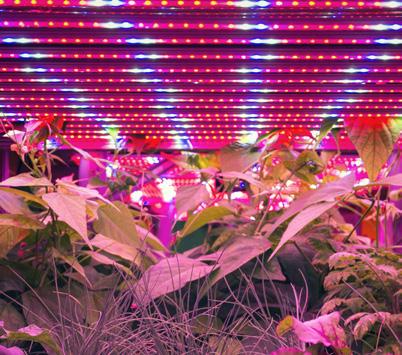
Keeping leaf temperature cool is essential to your crop, but you must protect the roots too! Whether growing in soil or coco, if the roots are uncomfortable, growth rates slow and pathogens grow. If using containers, consider going with something that isn’t black. The darker the pot, the more heat it absorbs. And as always, we cannot underestimate the power of mulch. Indoors and outdoors, covering the growing medium with even just an inch of organic mulch will keep things cooler below and prevent water evaporation. 3
For more tips on protecting outdoor gardens from heat stress, read Anne Gibson’s article on page 34!
FAST. RESPONSIVE. BESPOKE.

Designer A person who takes a problem and creates a solution.

Developer Takes a design solution and builds a web experience. Business Is what comes to those who sell an experience.







































































At CANNA we love to spend our time conducting research and producing the best quality in everything that we do, whether it be our products, our plants or even our posts! The same applies to this advert. Scan the QR code and check out the Behind The Scenes footage of this advert creation.
